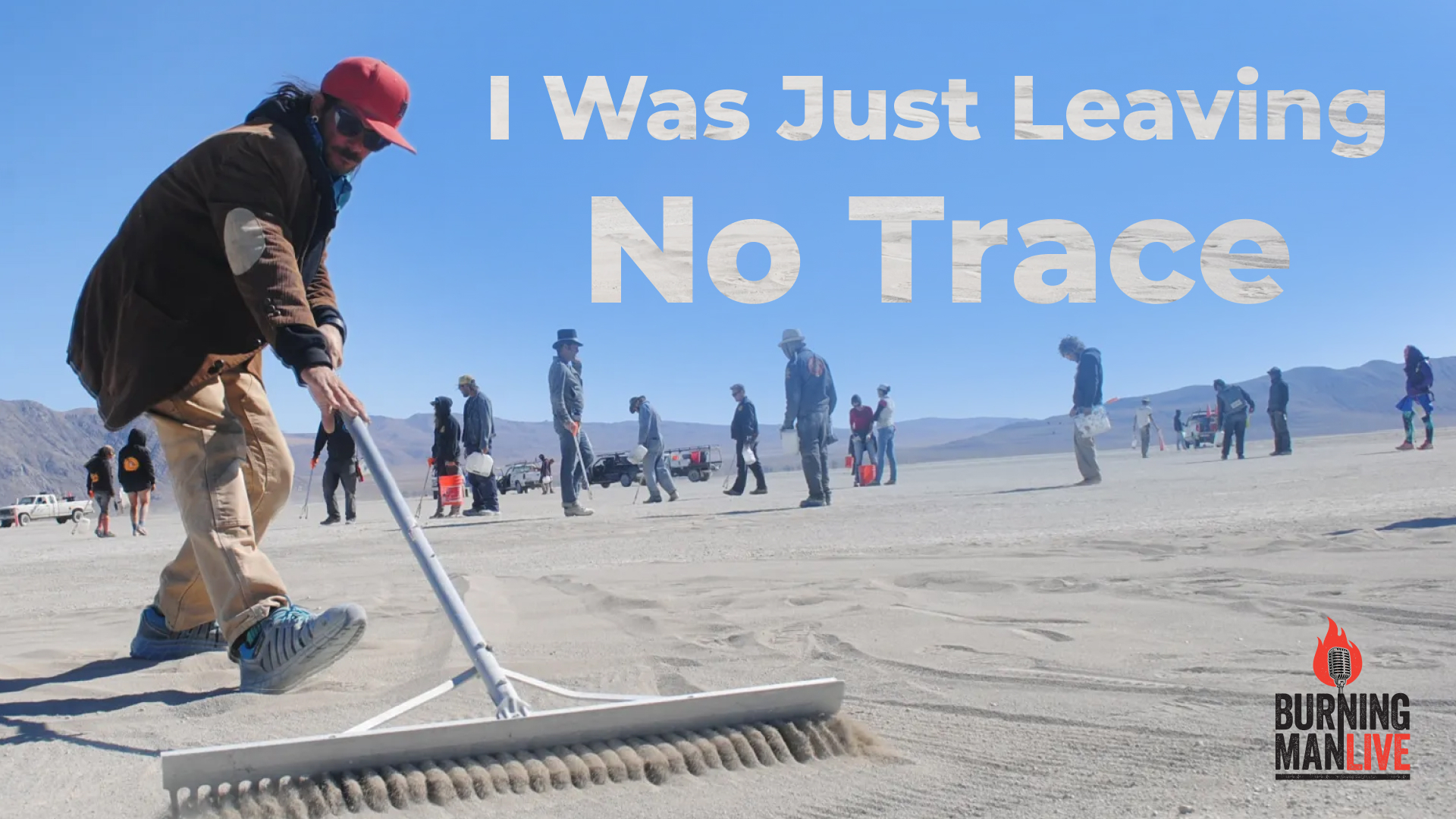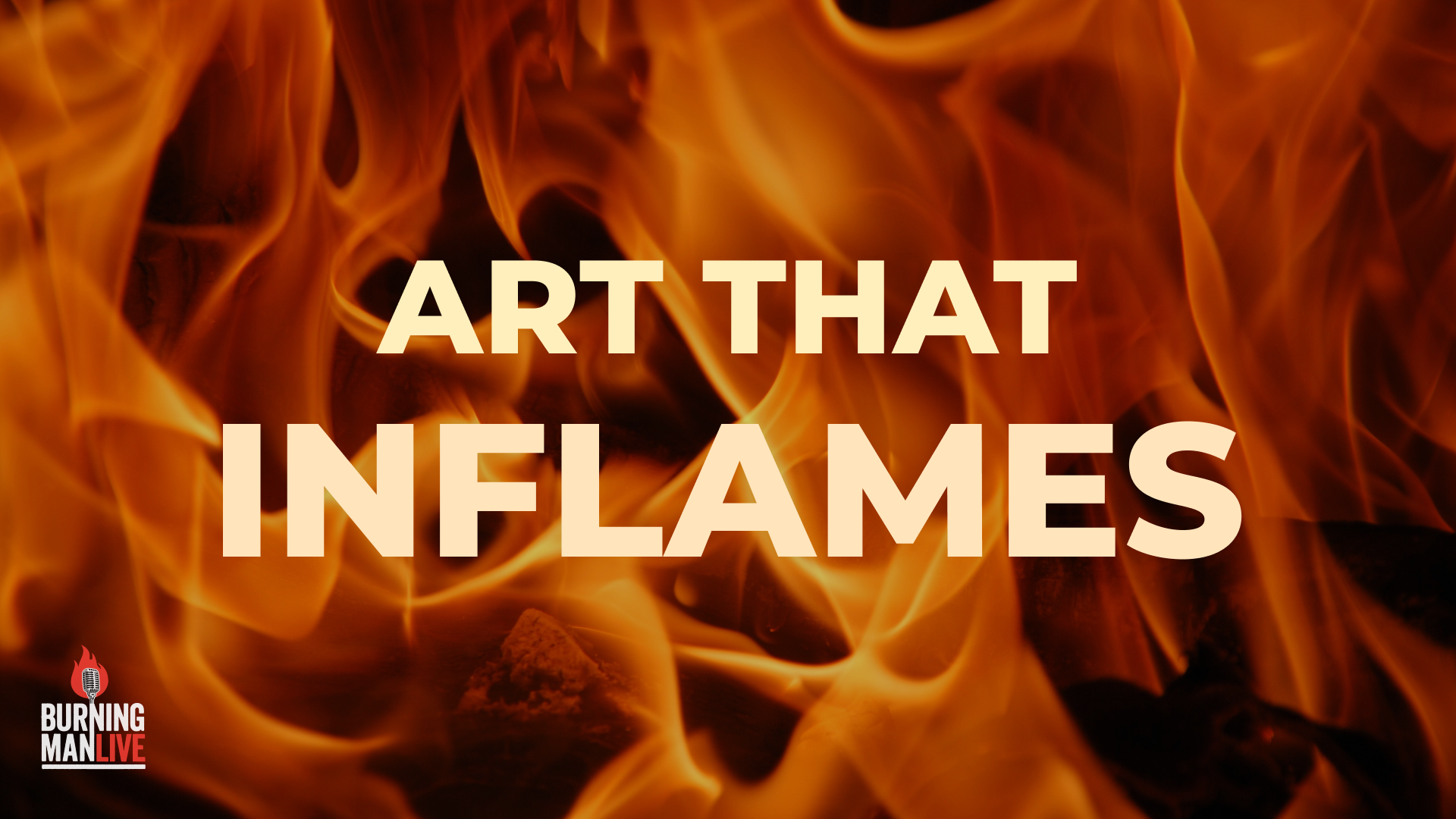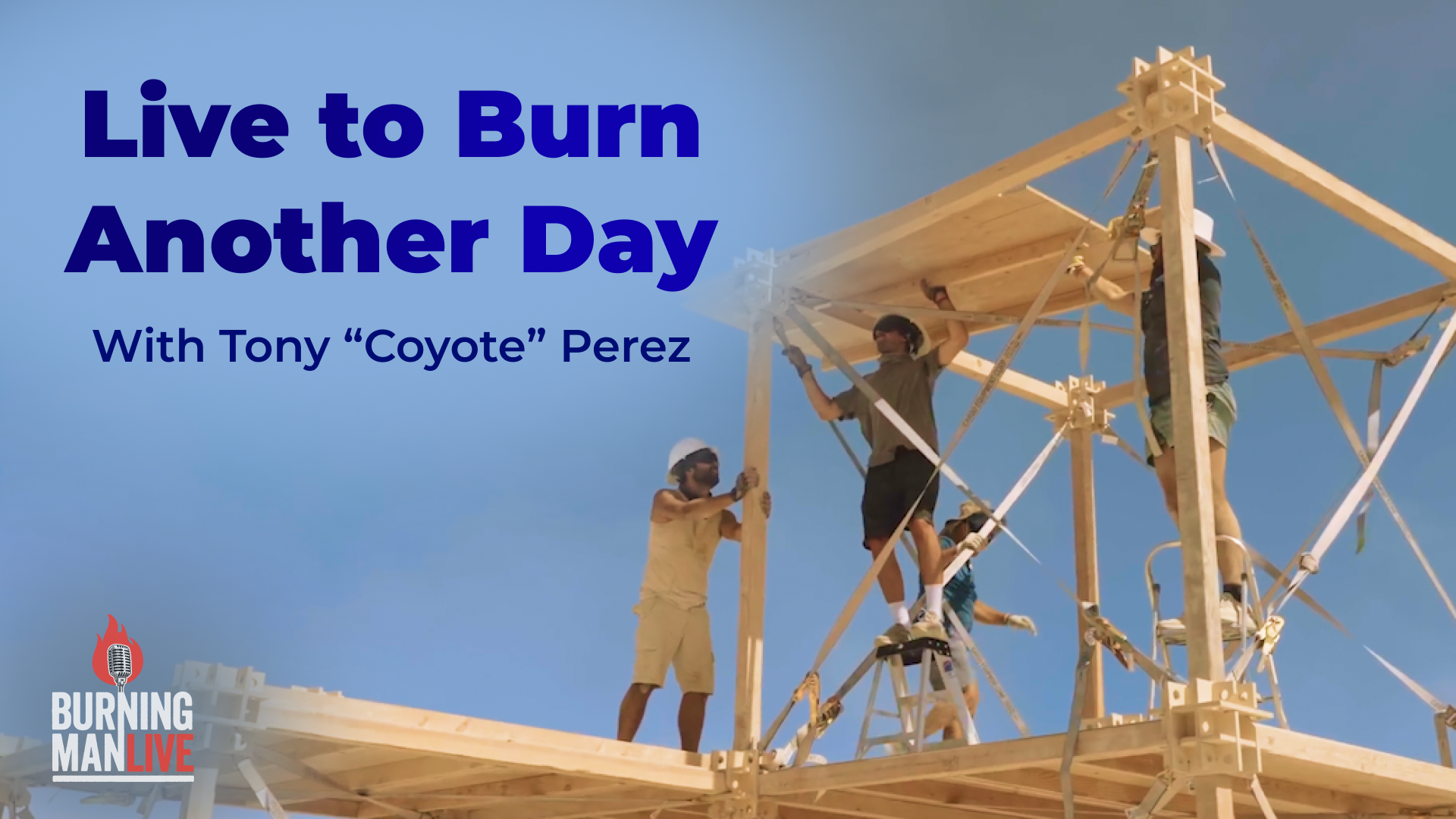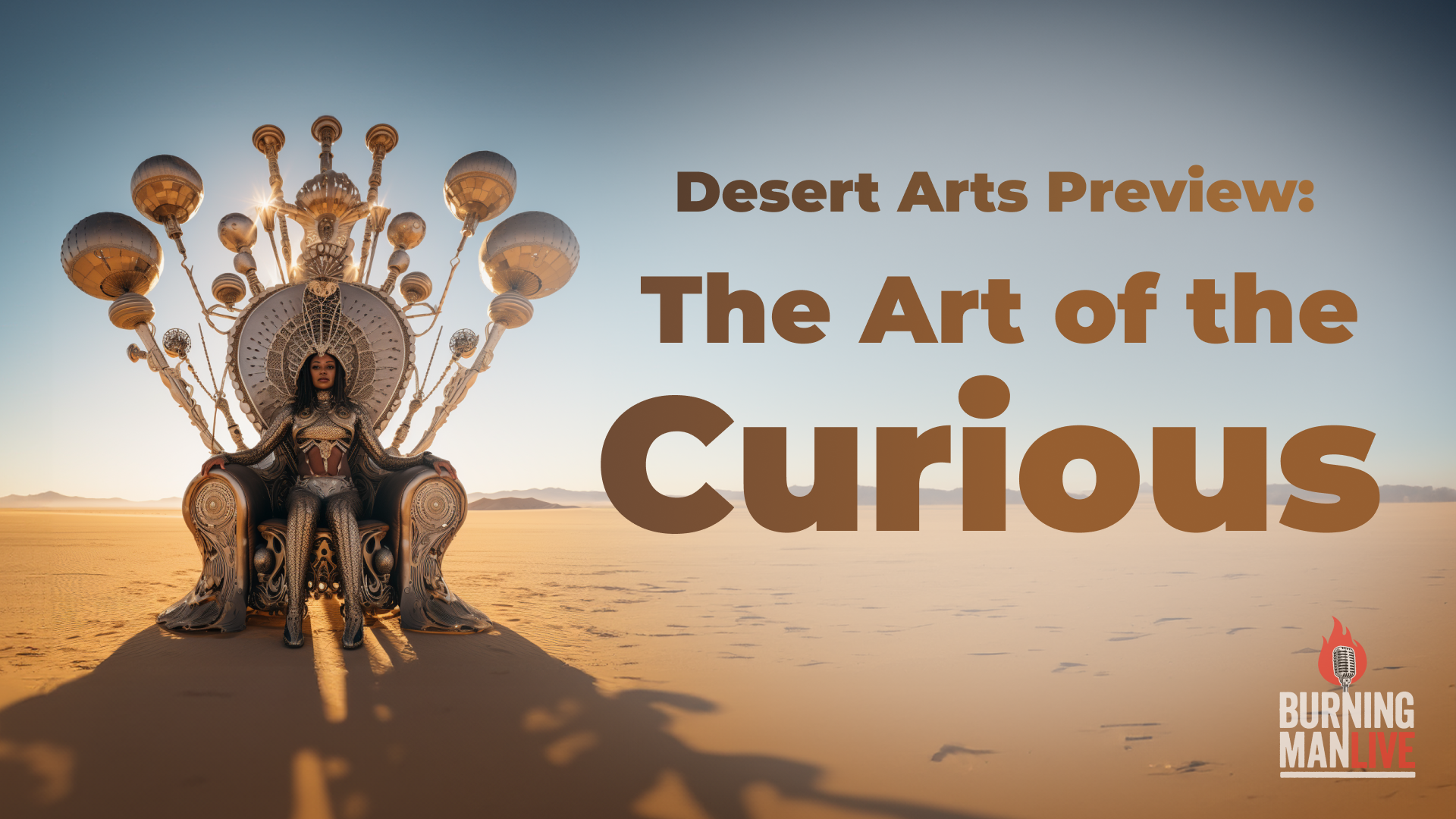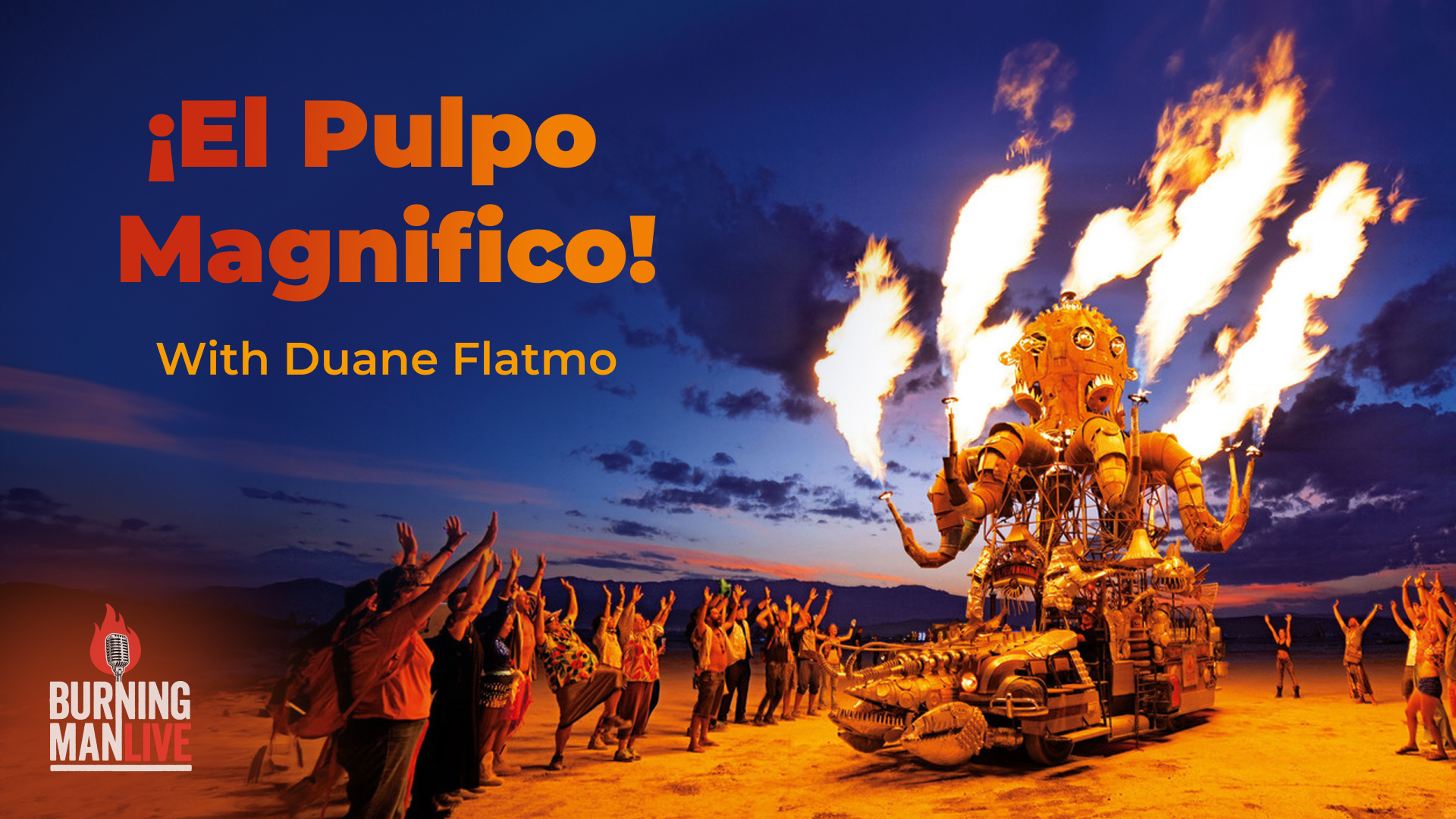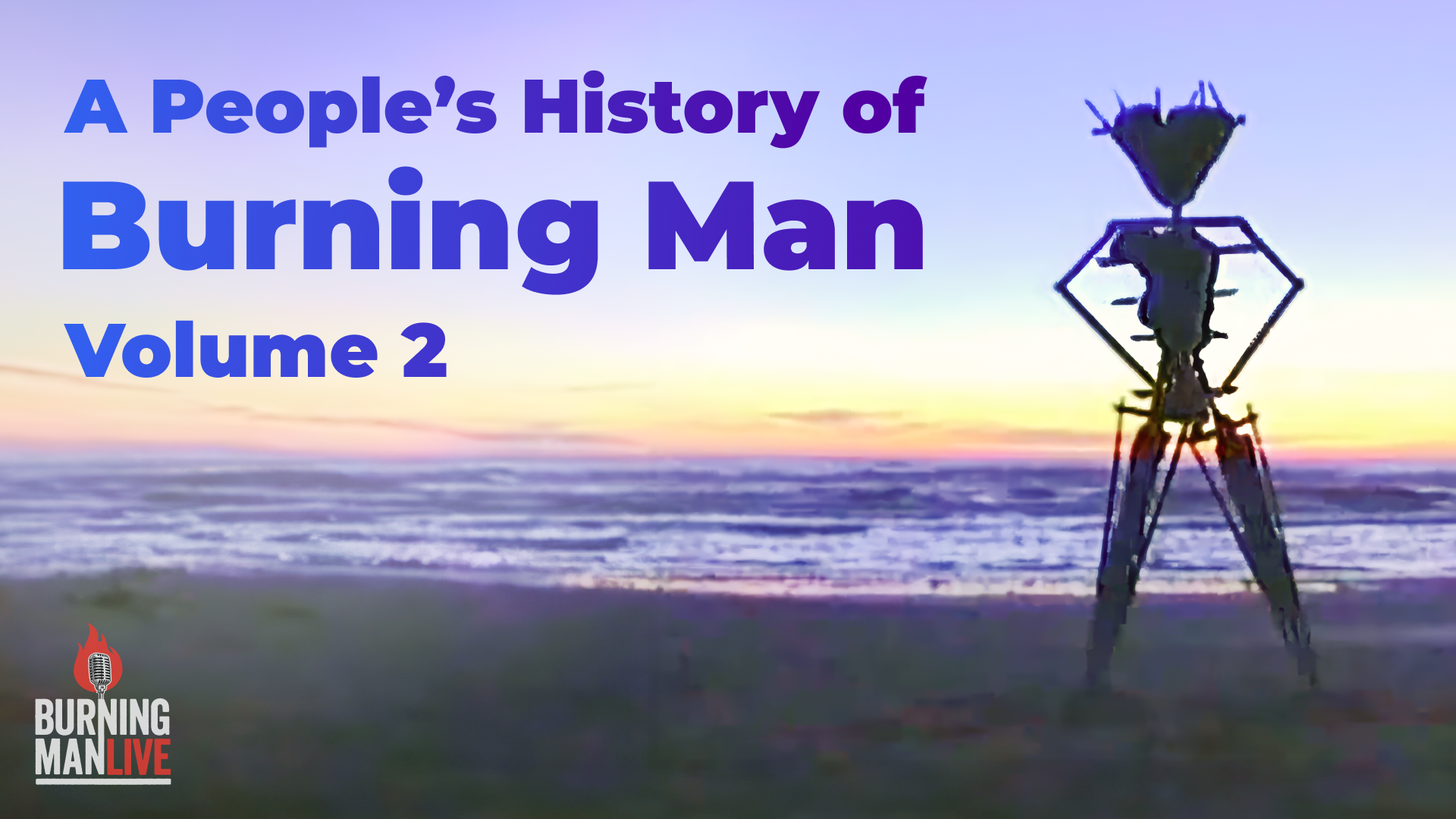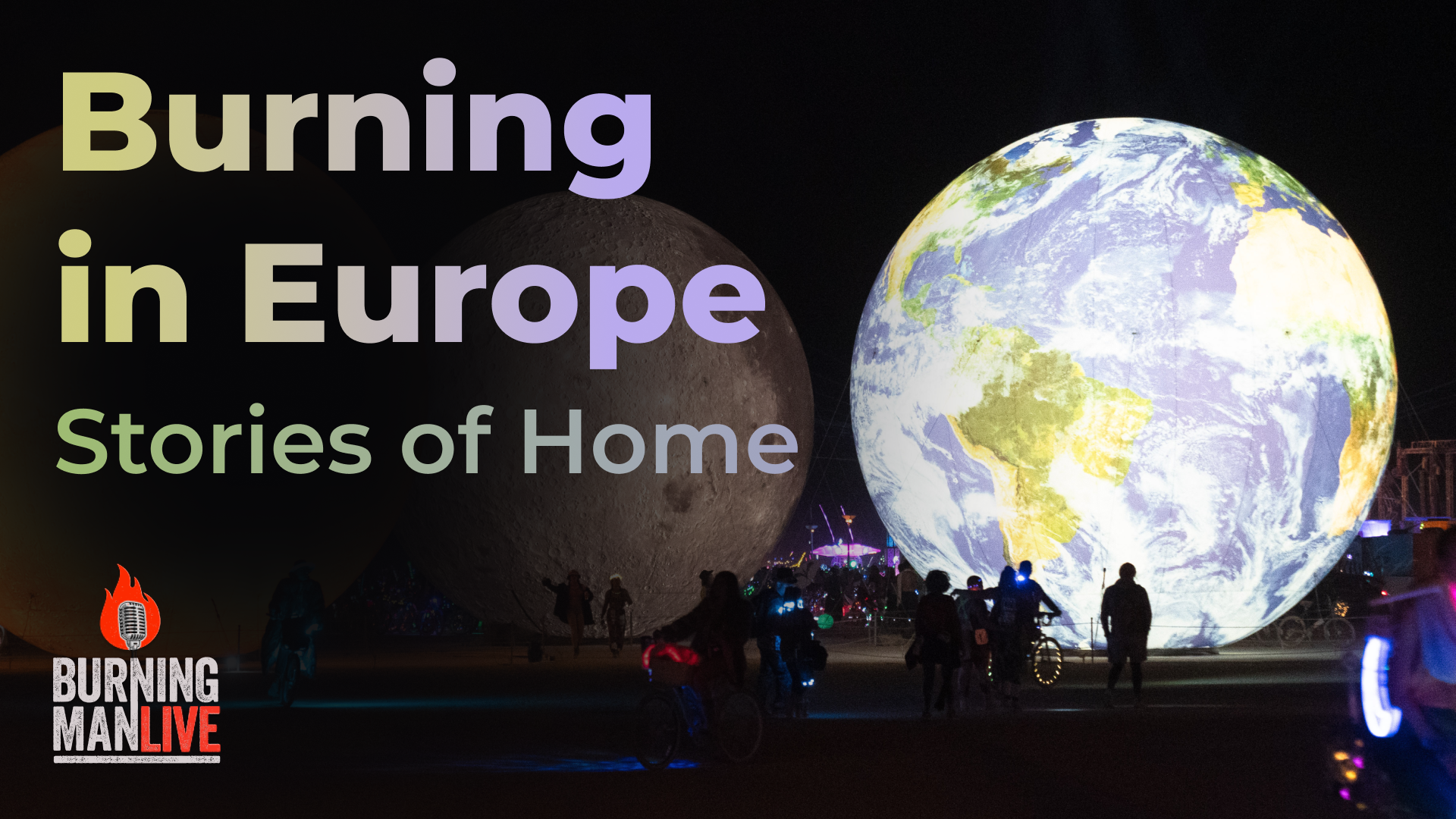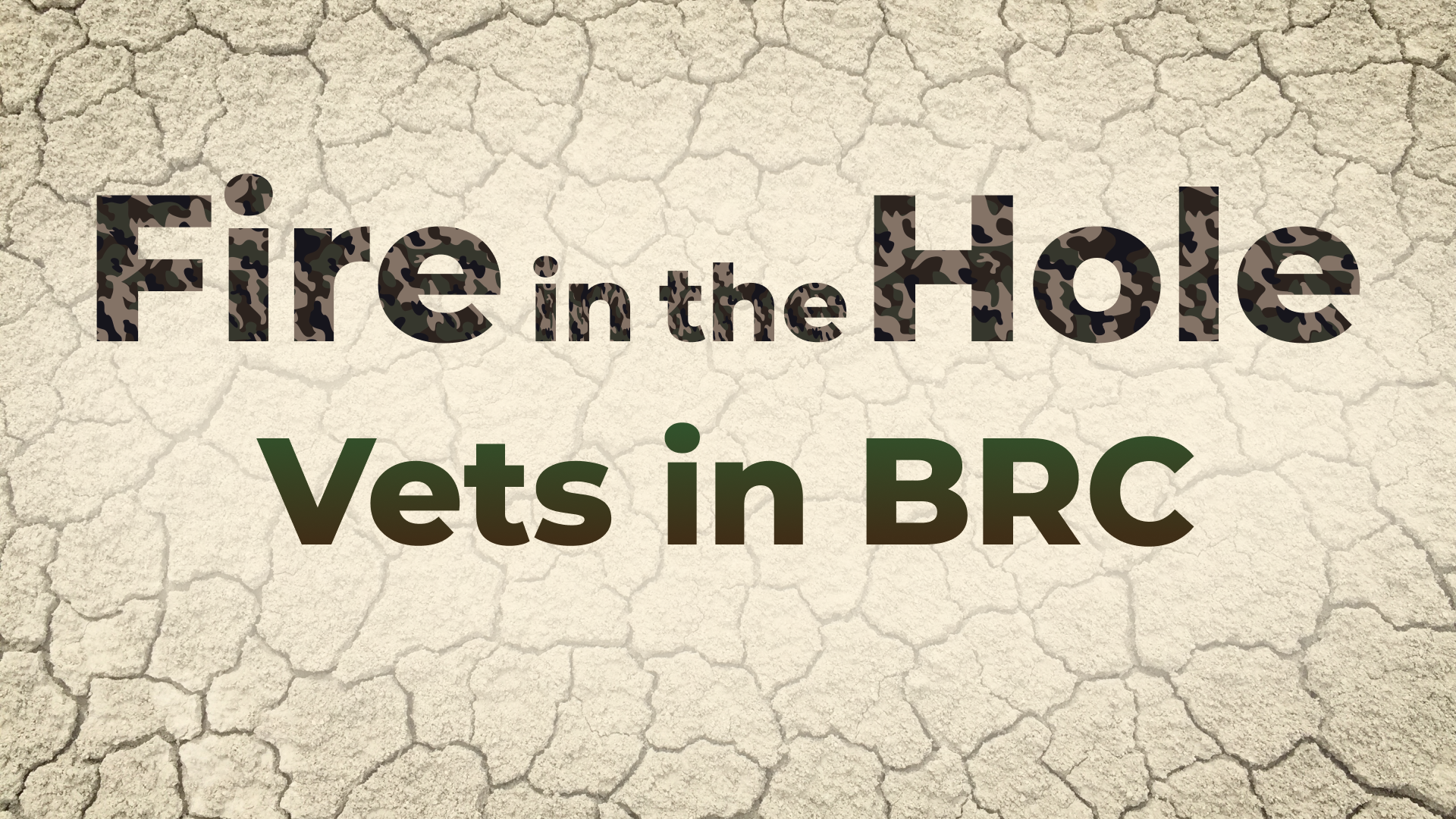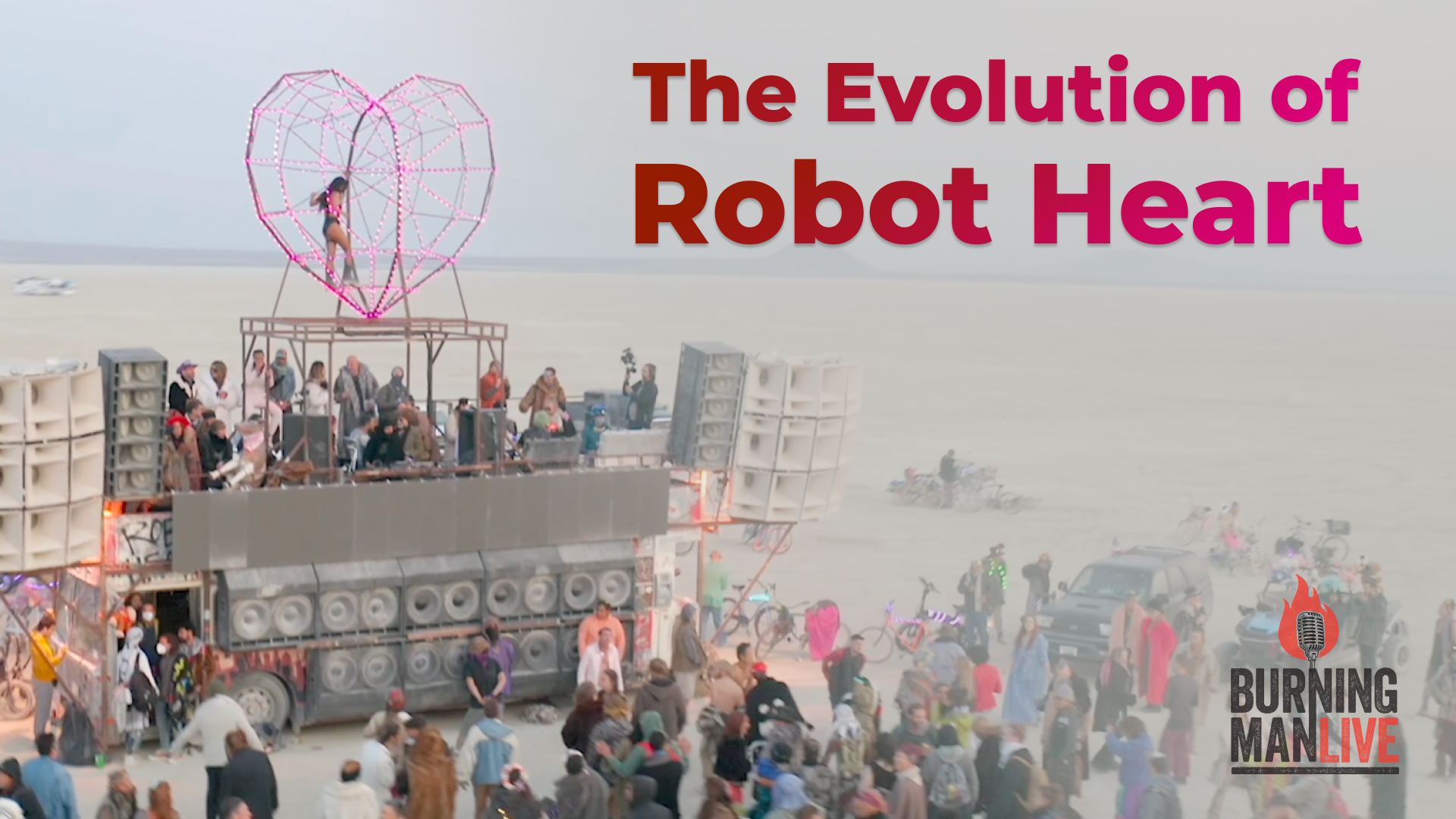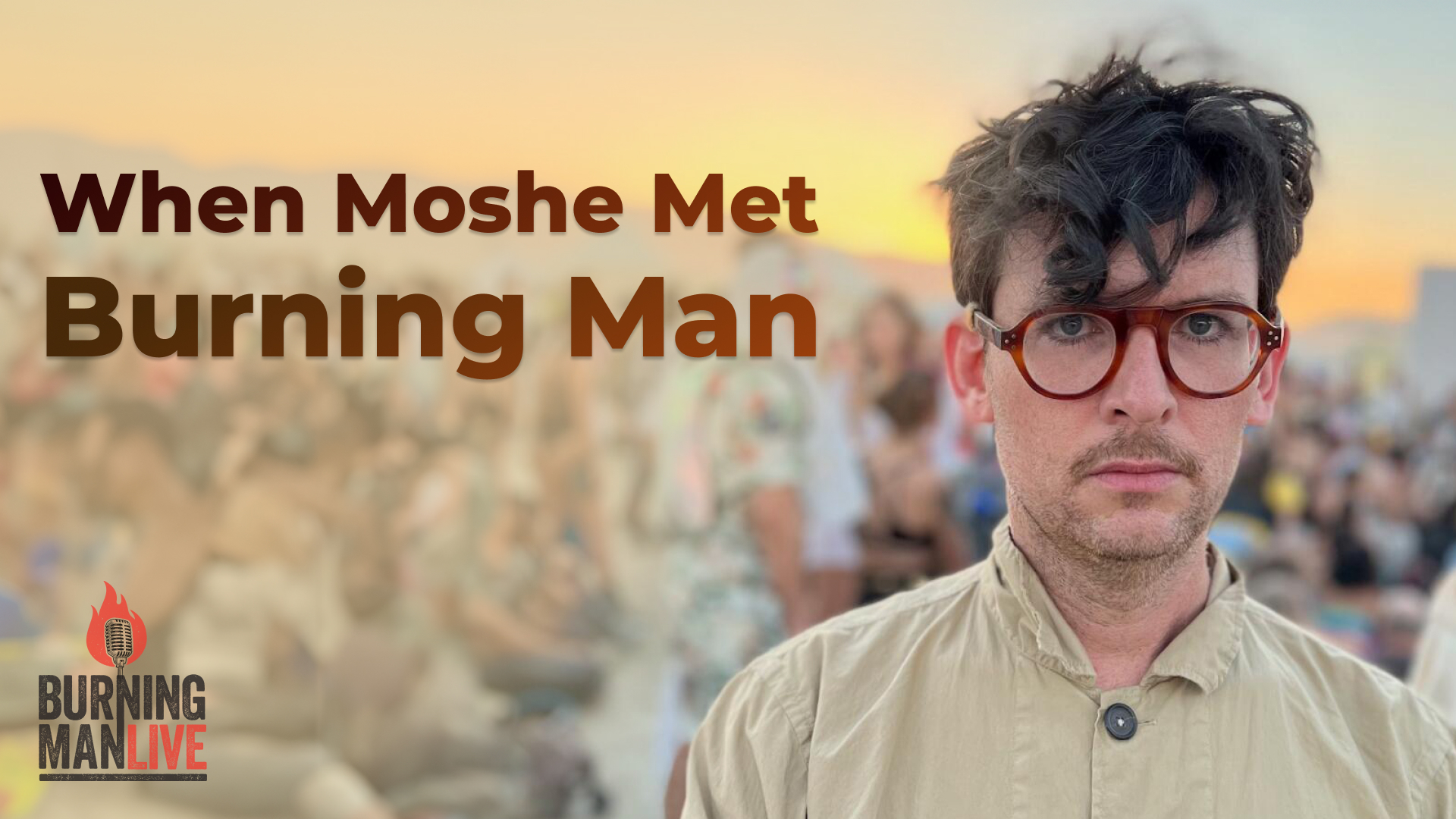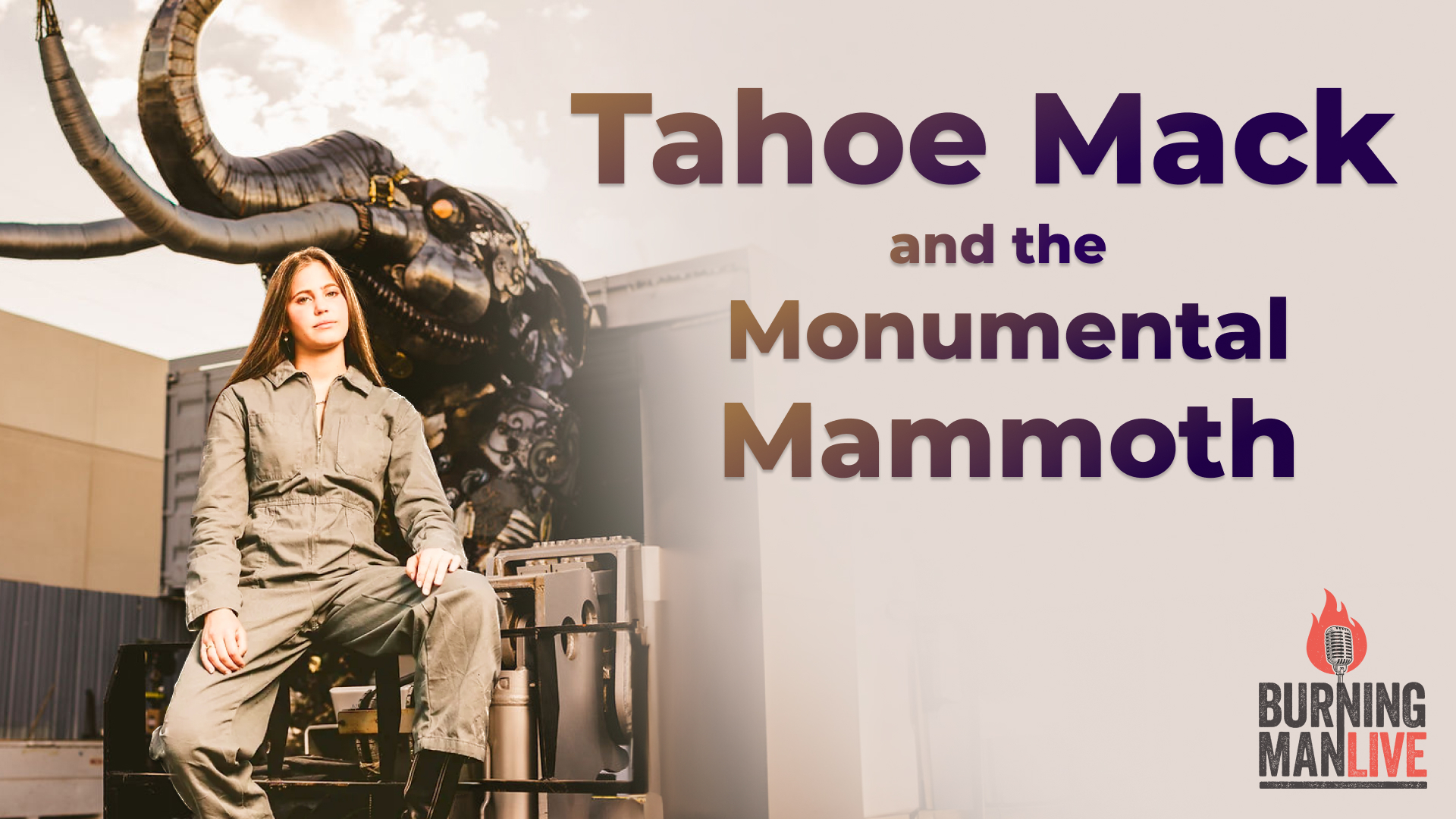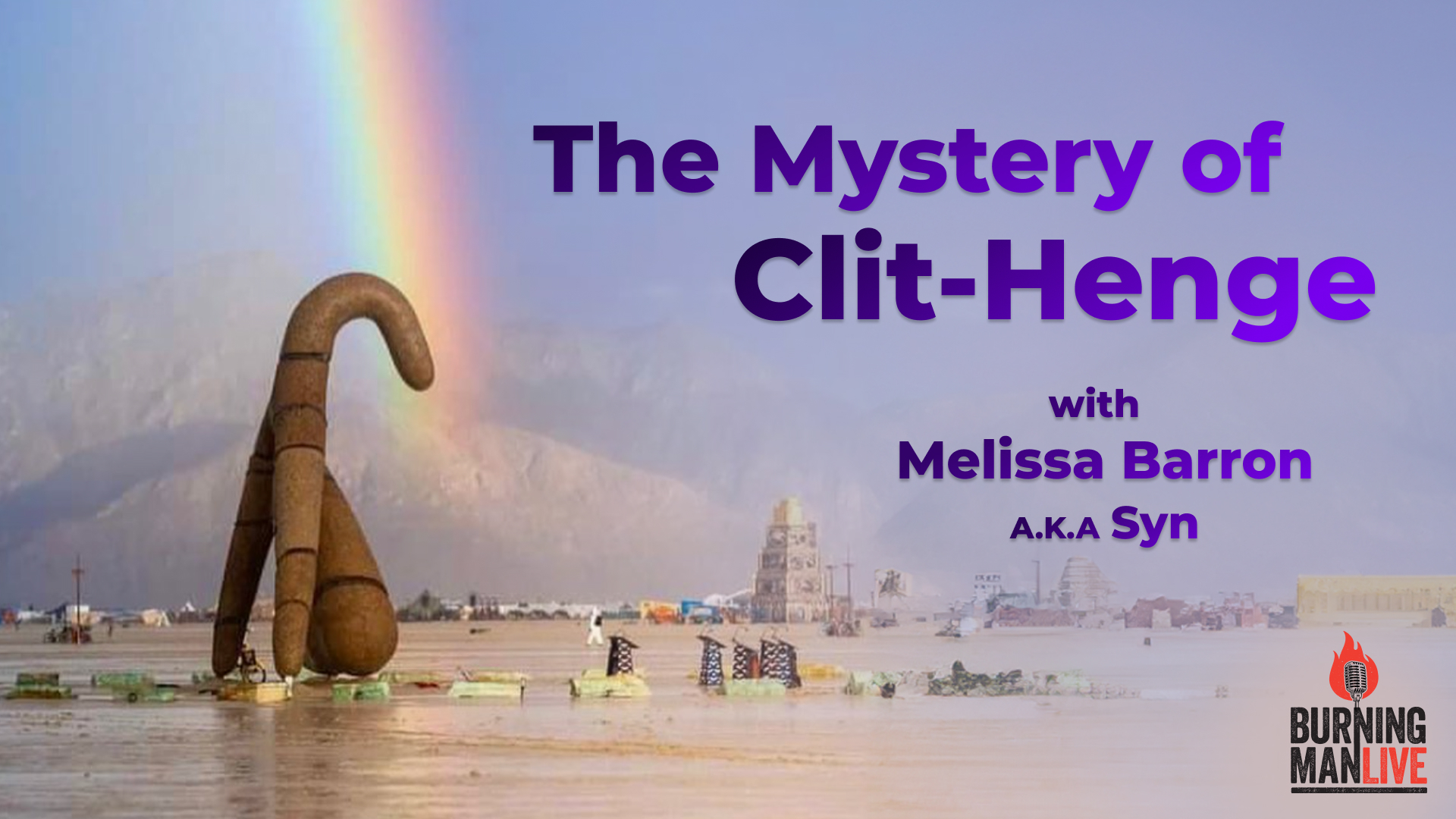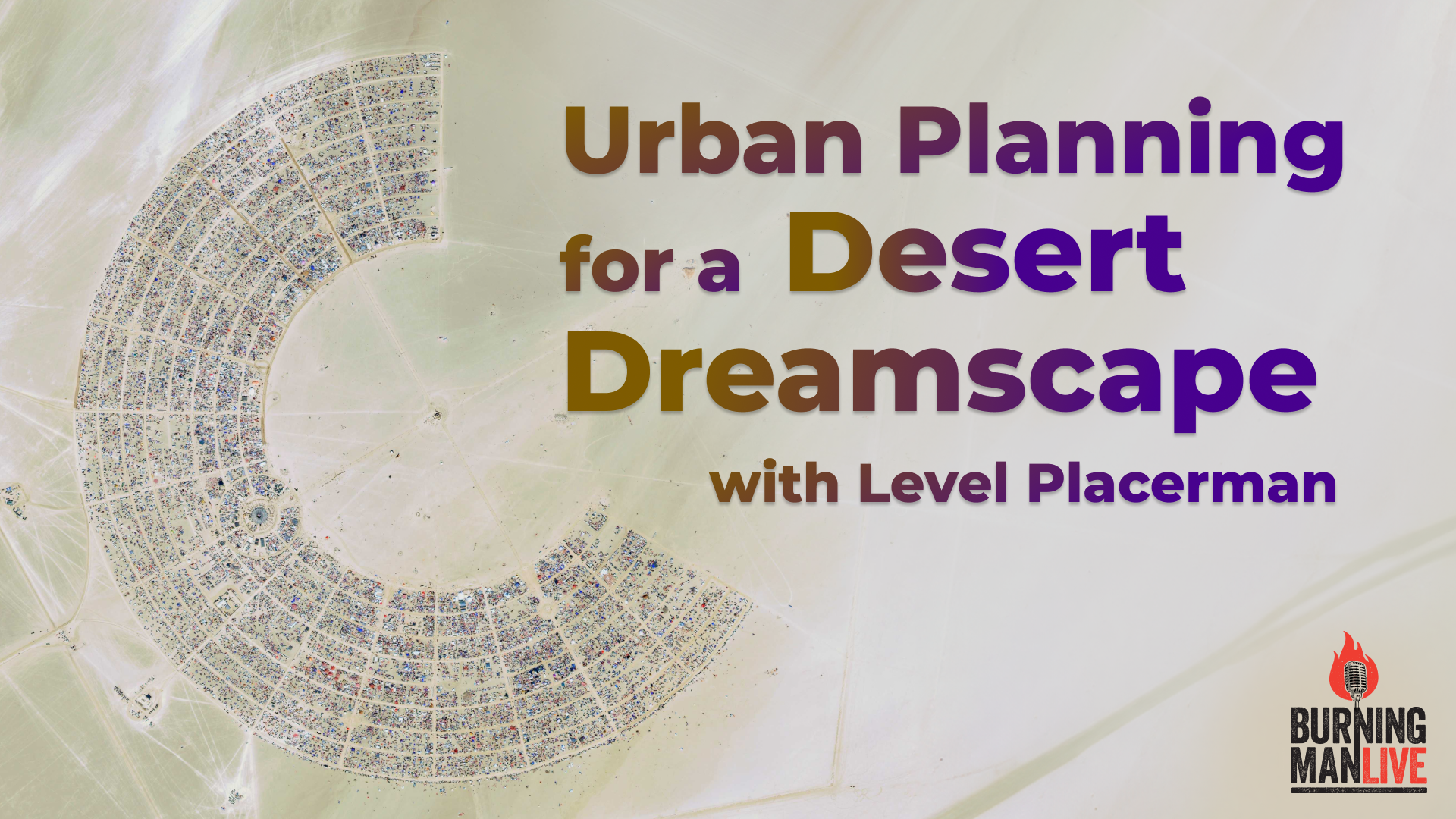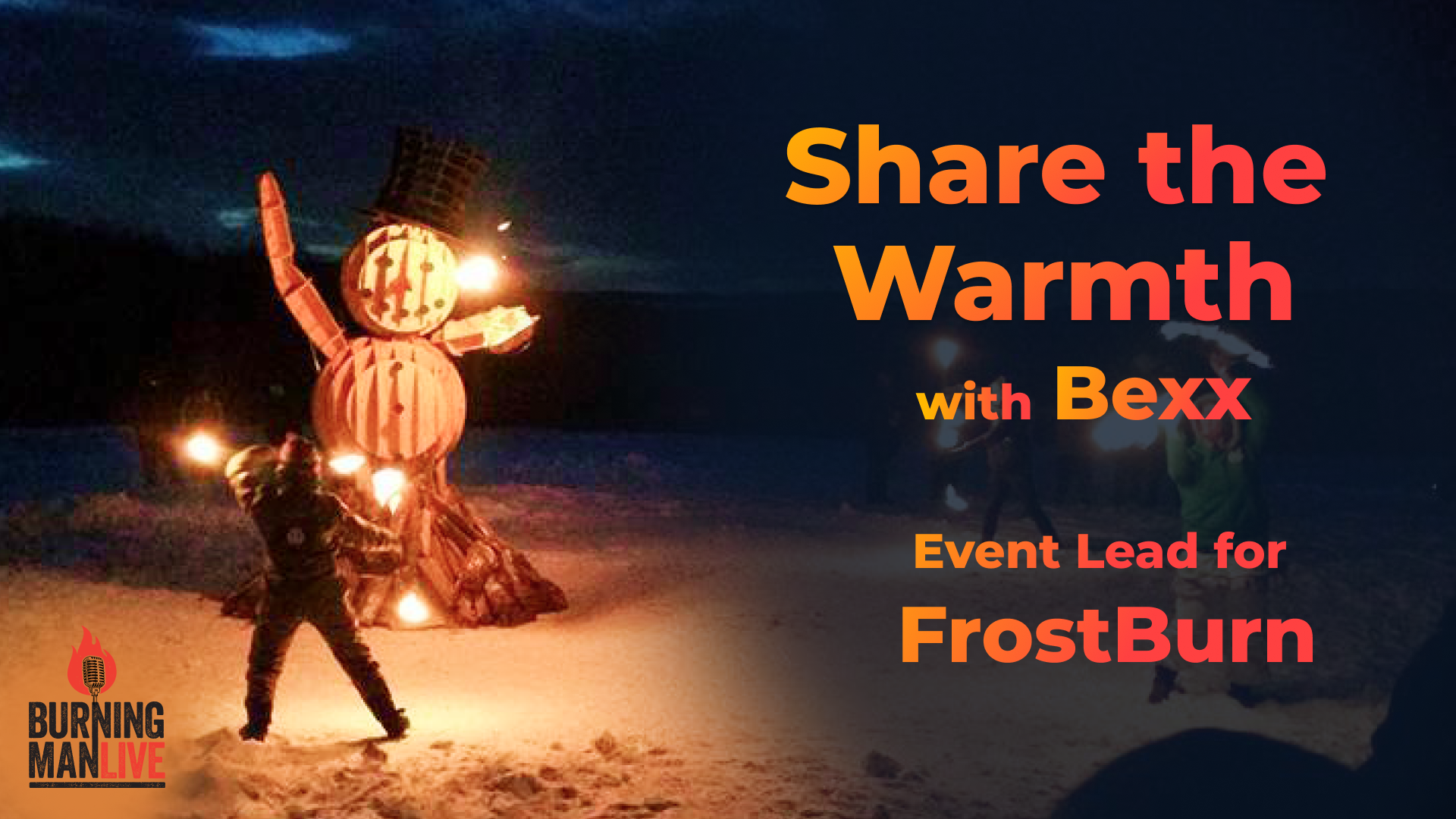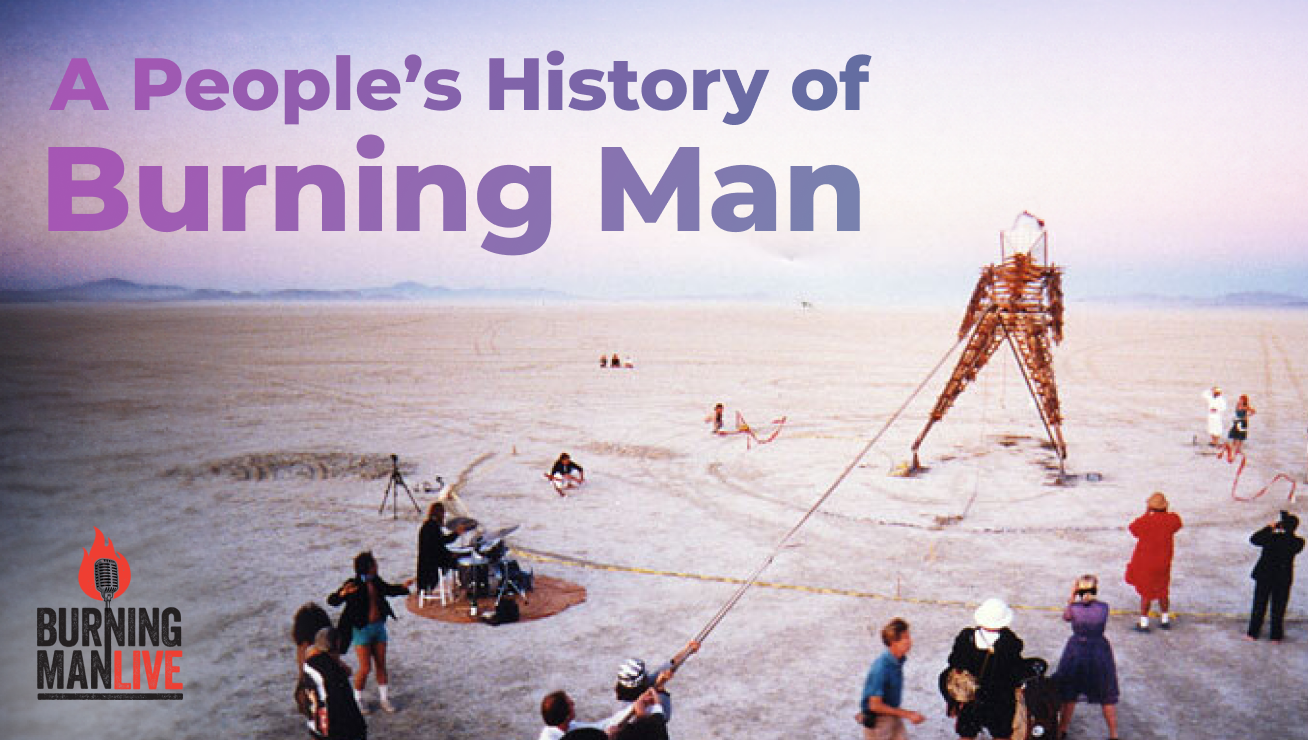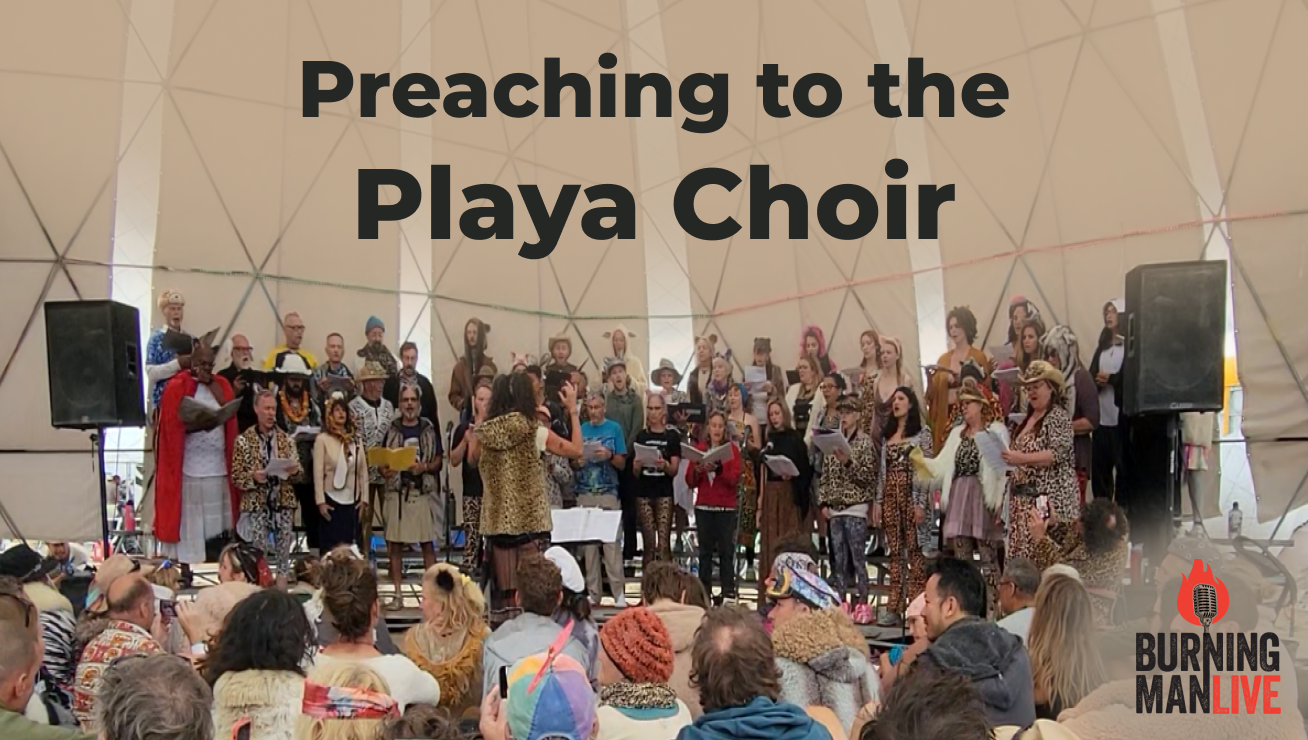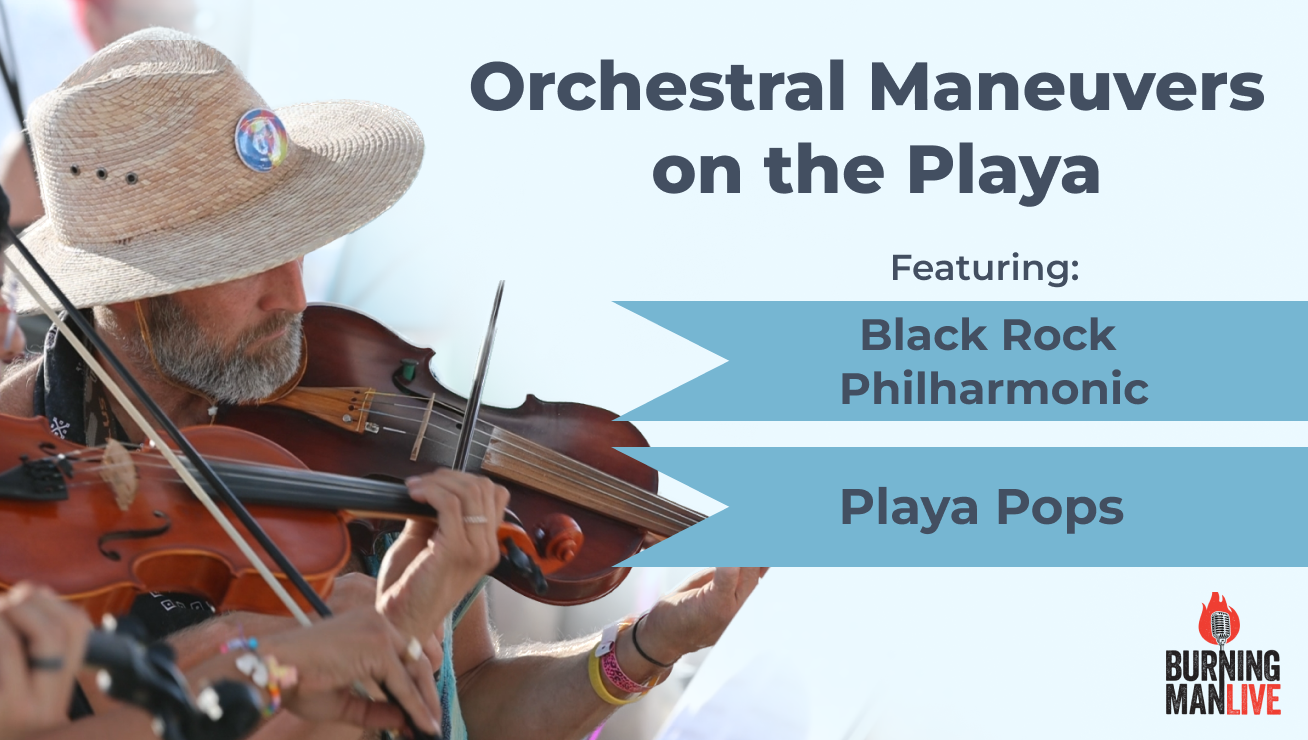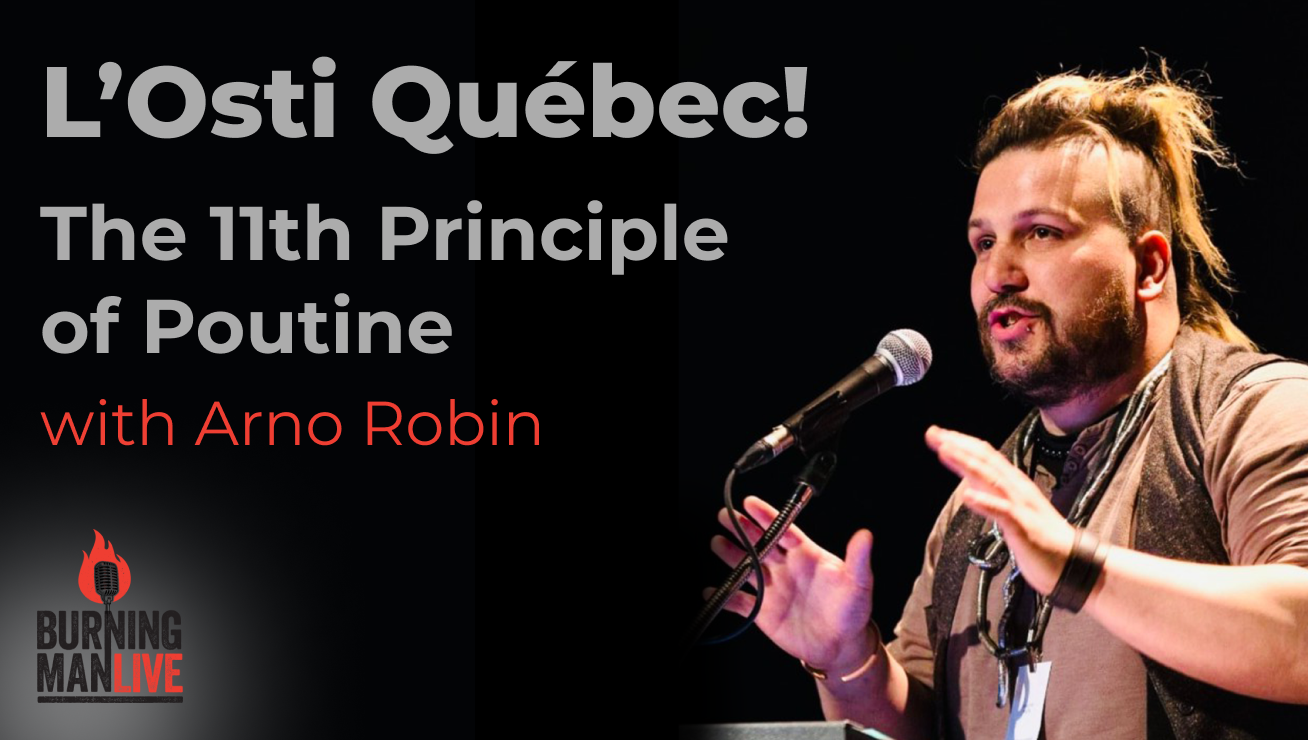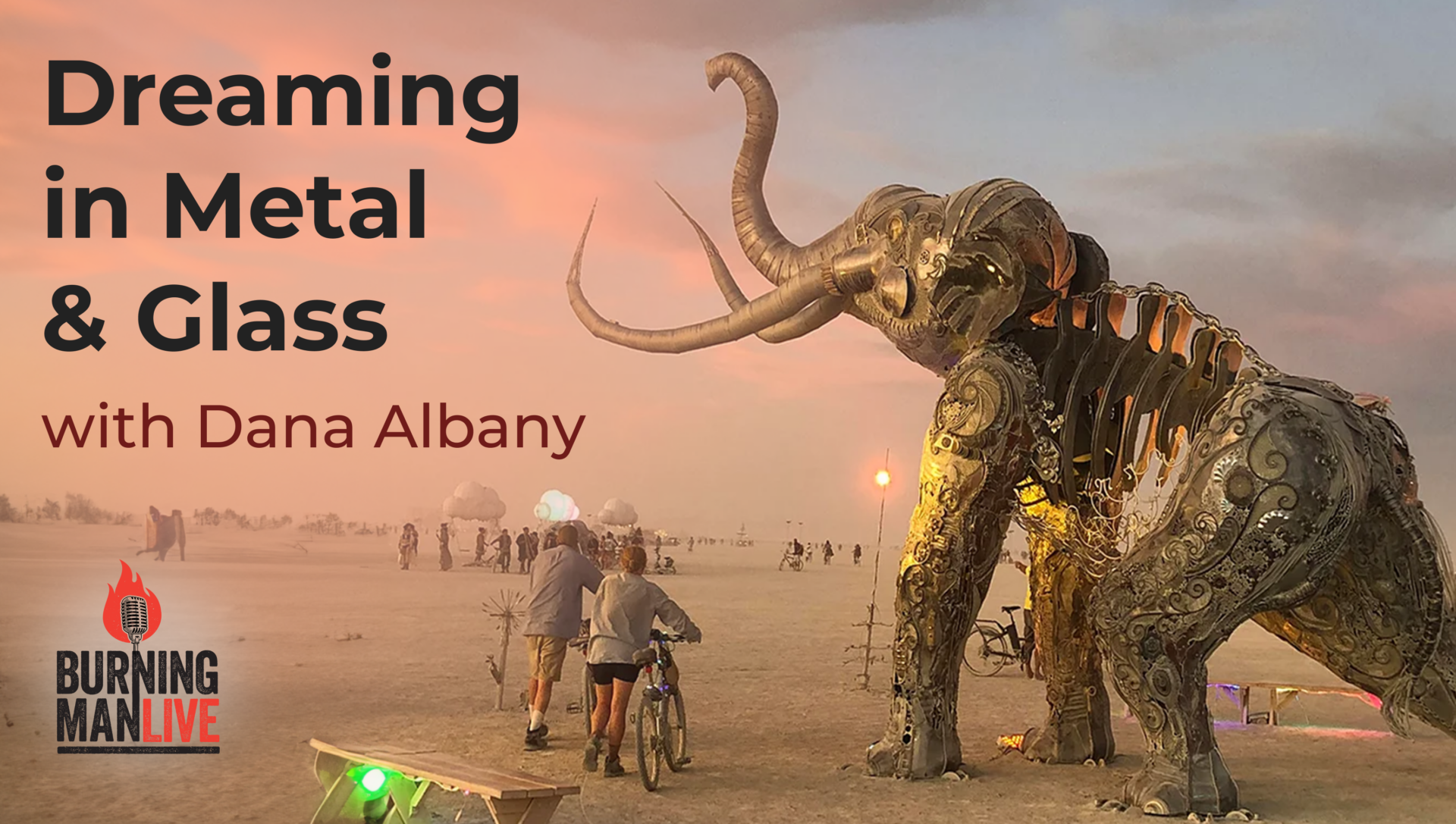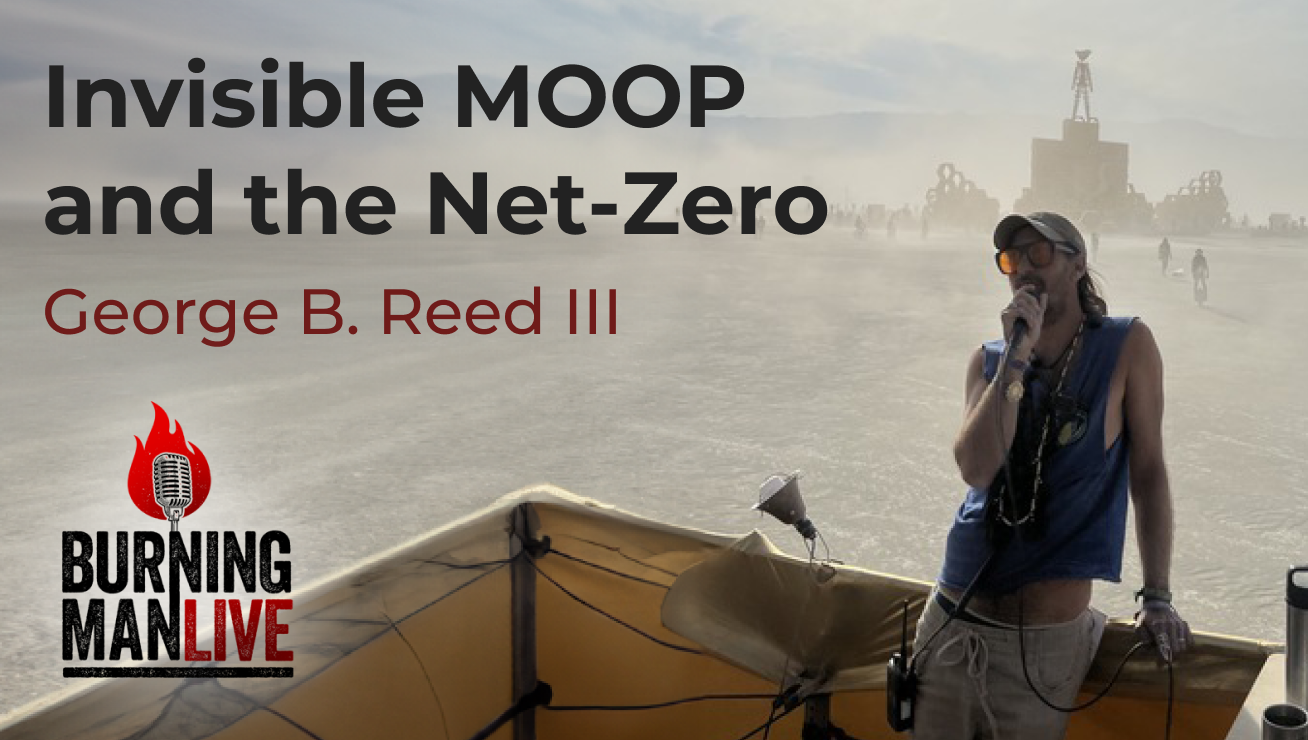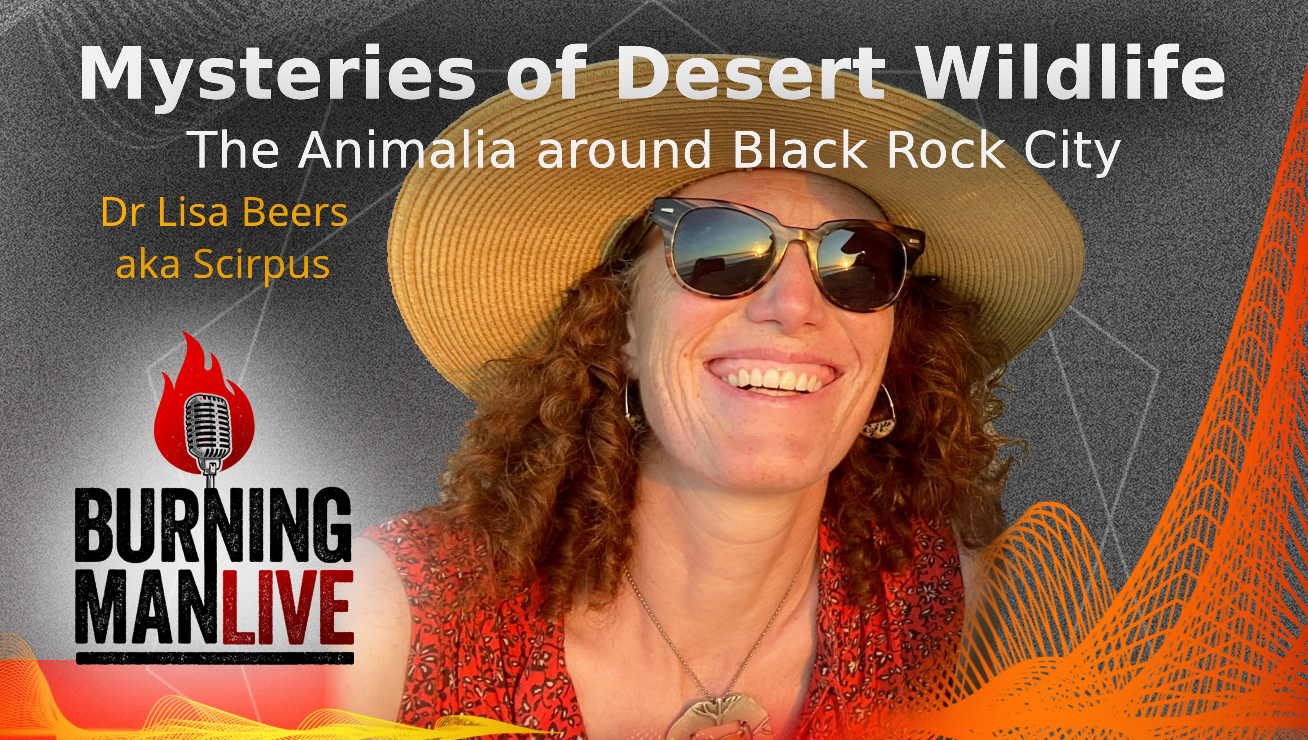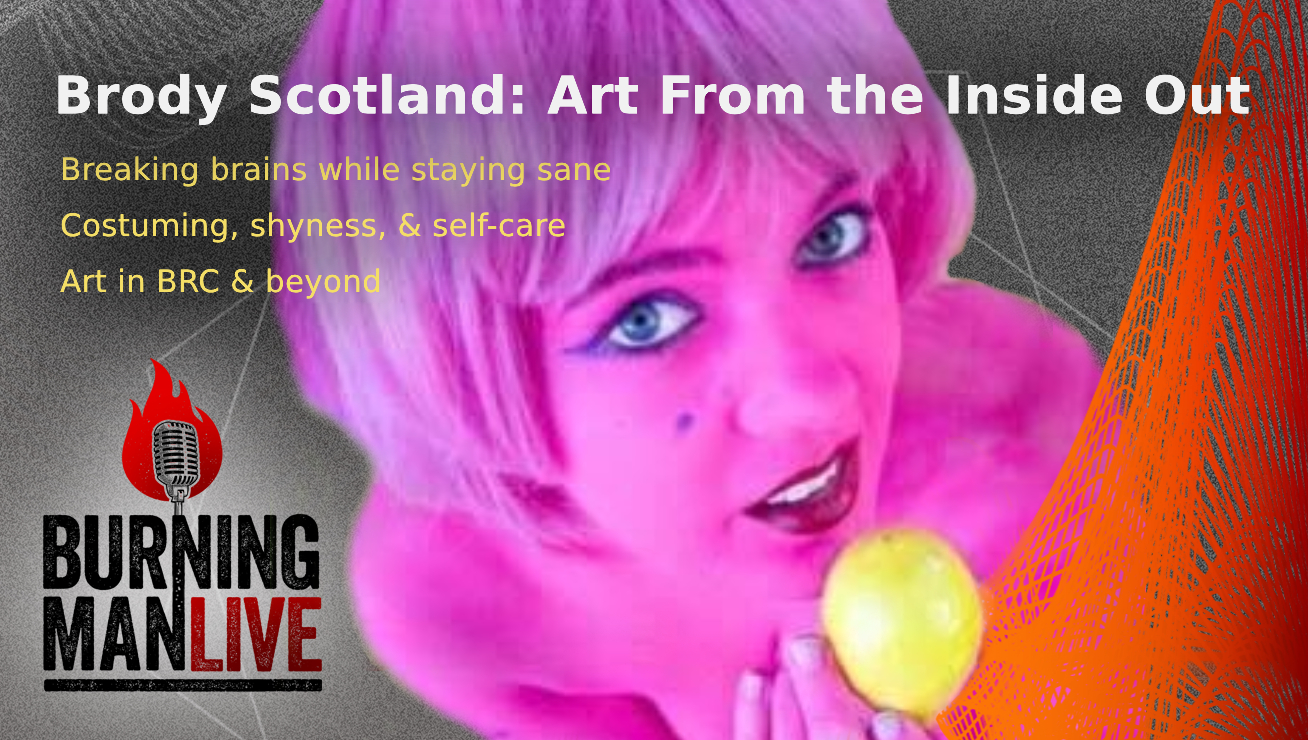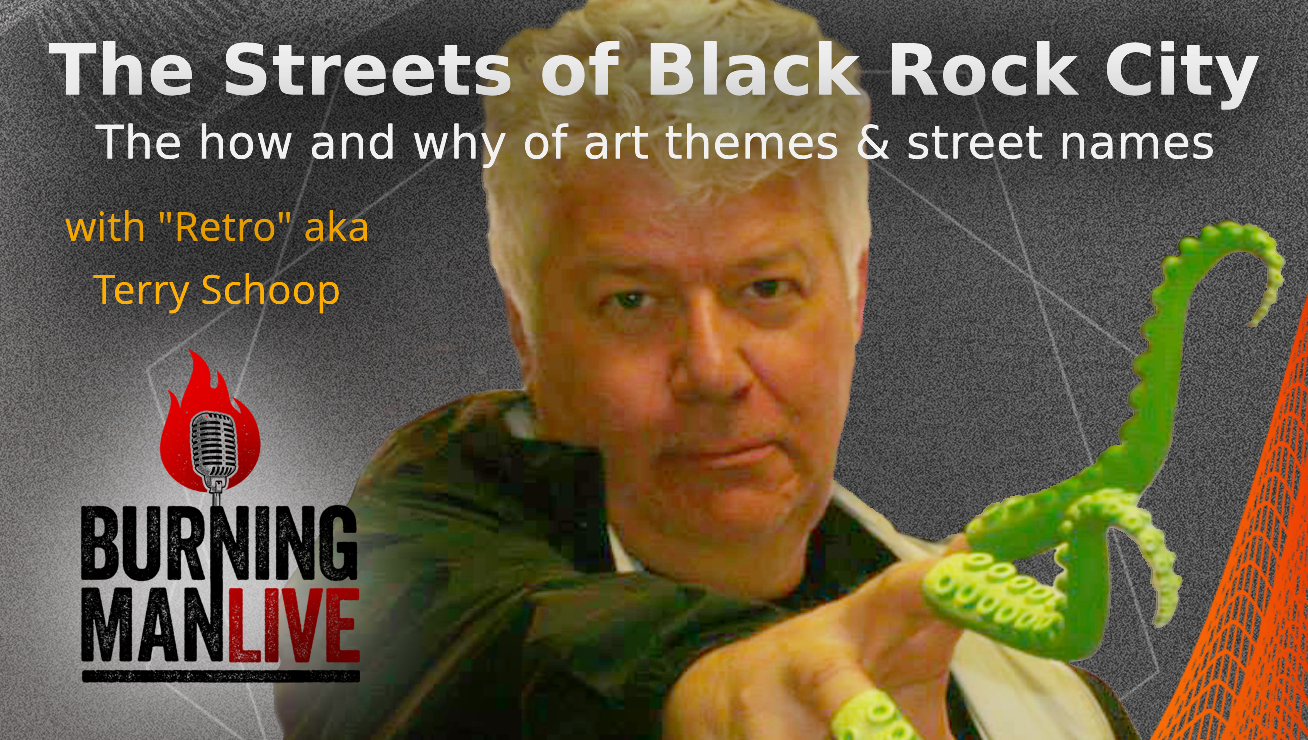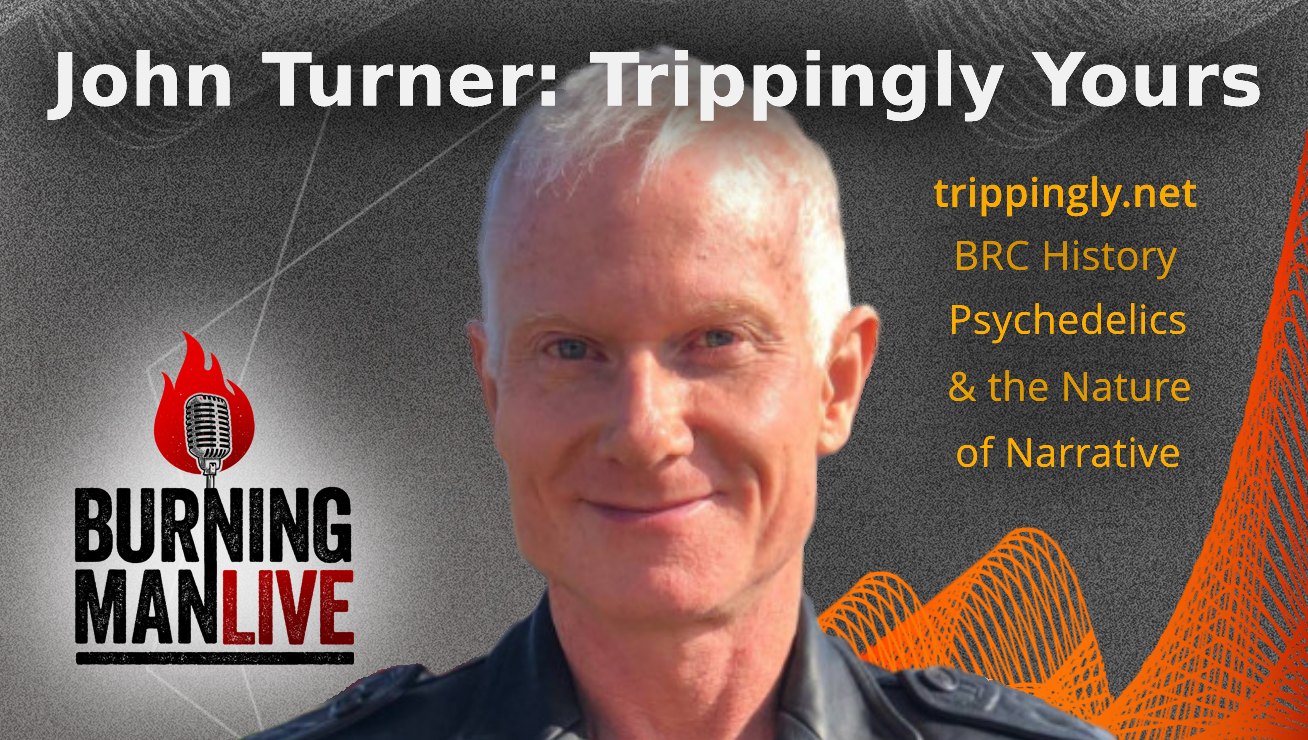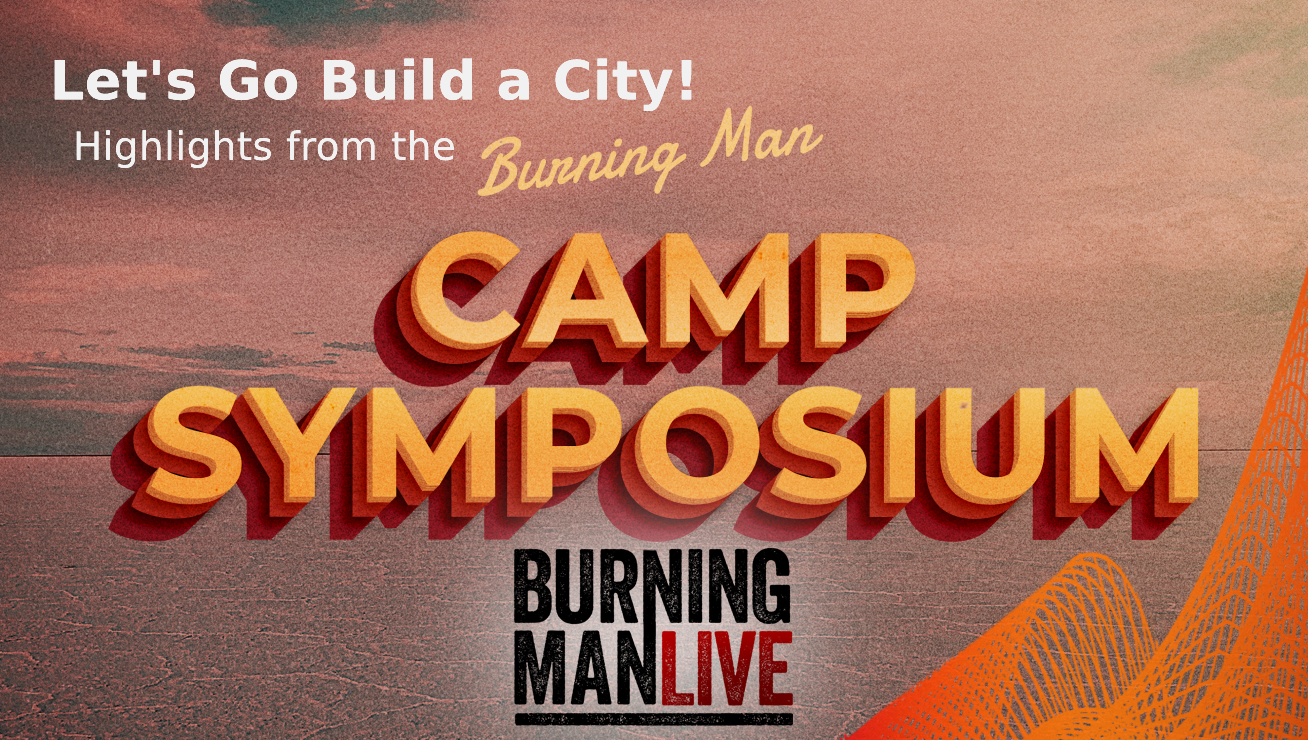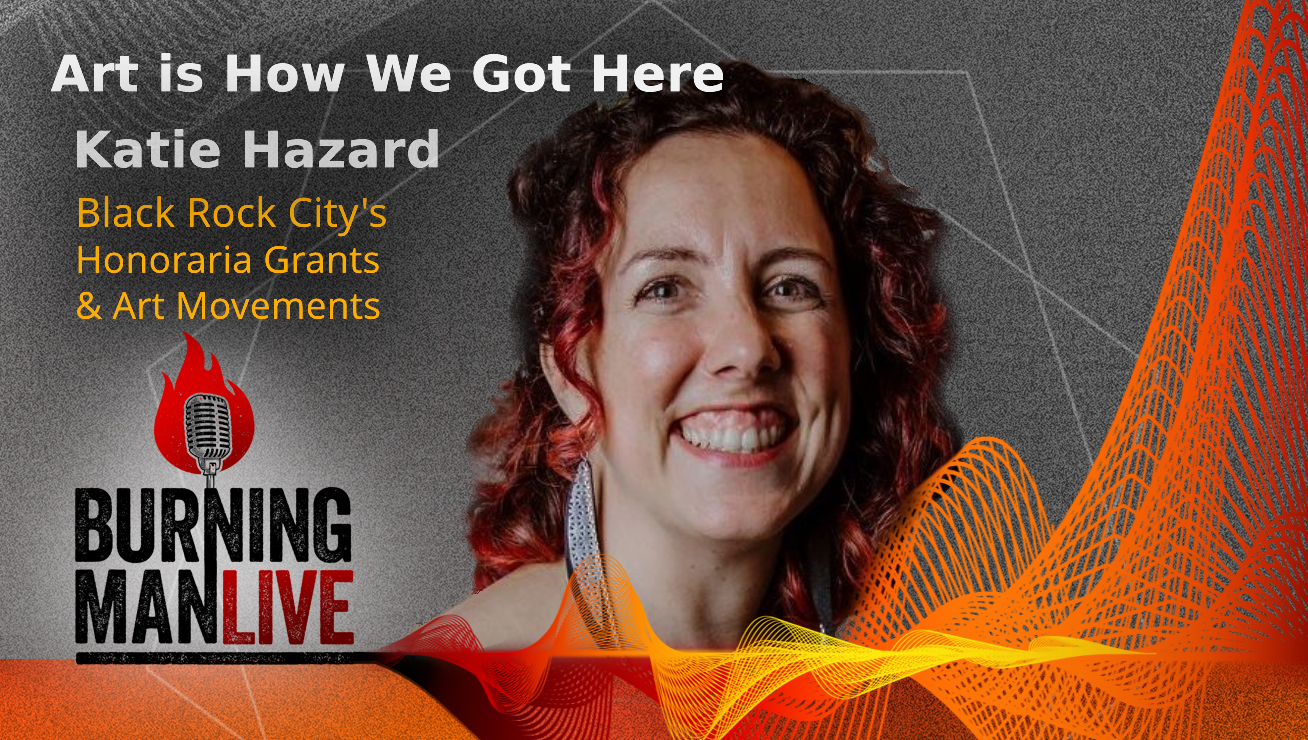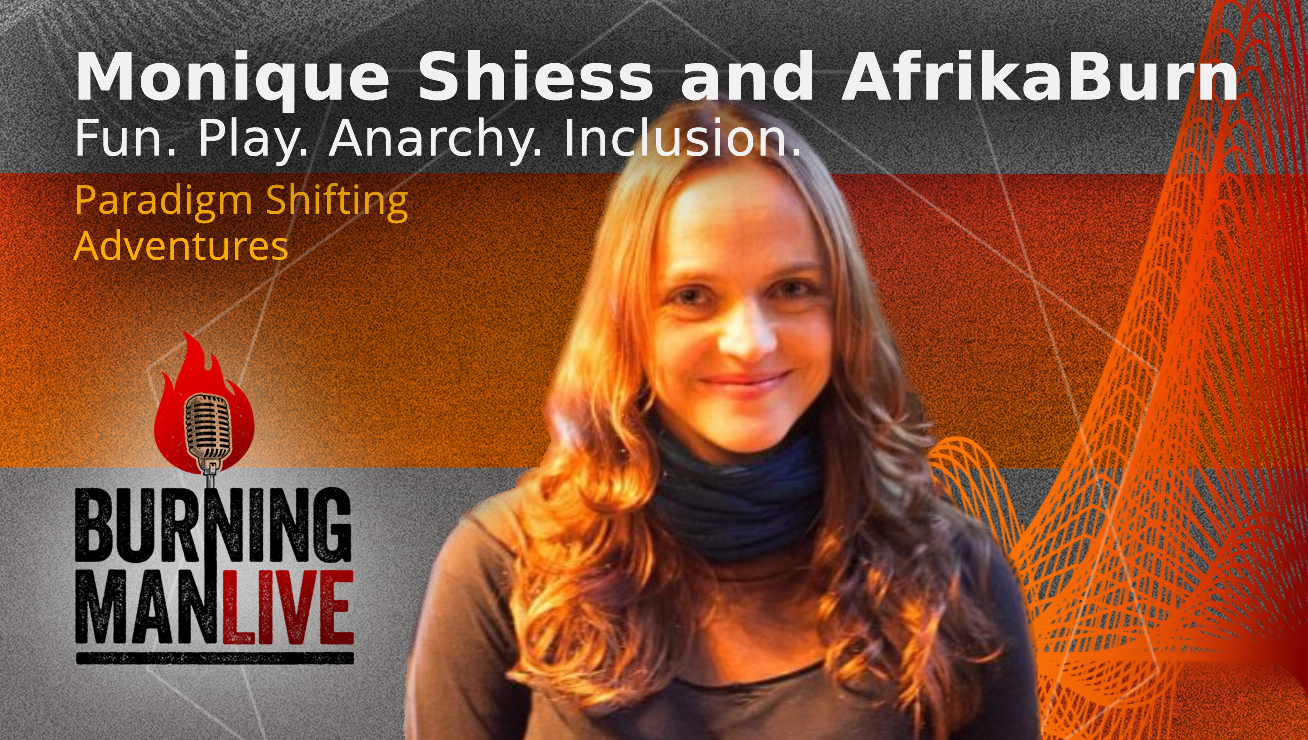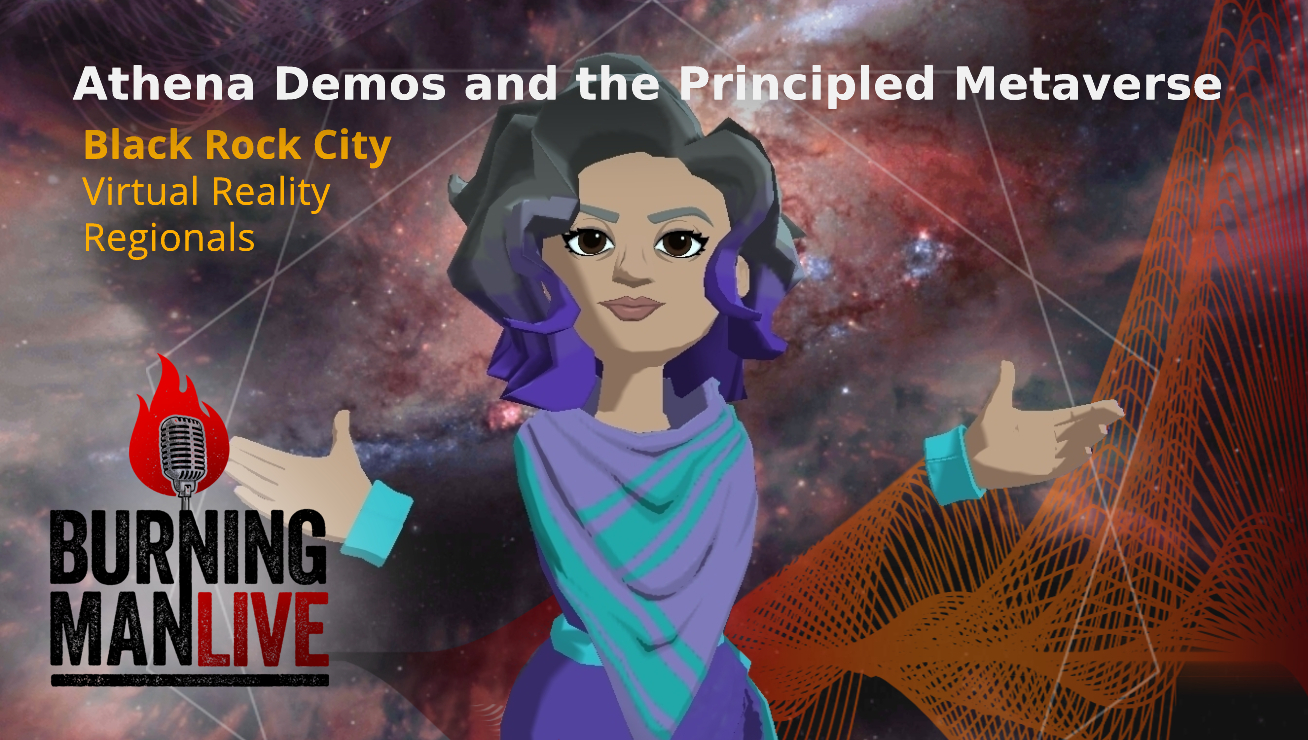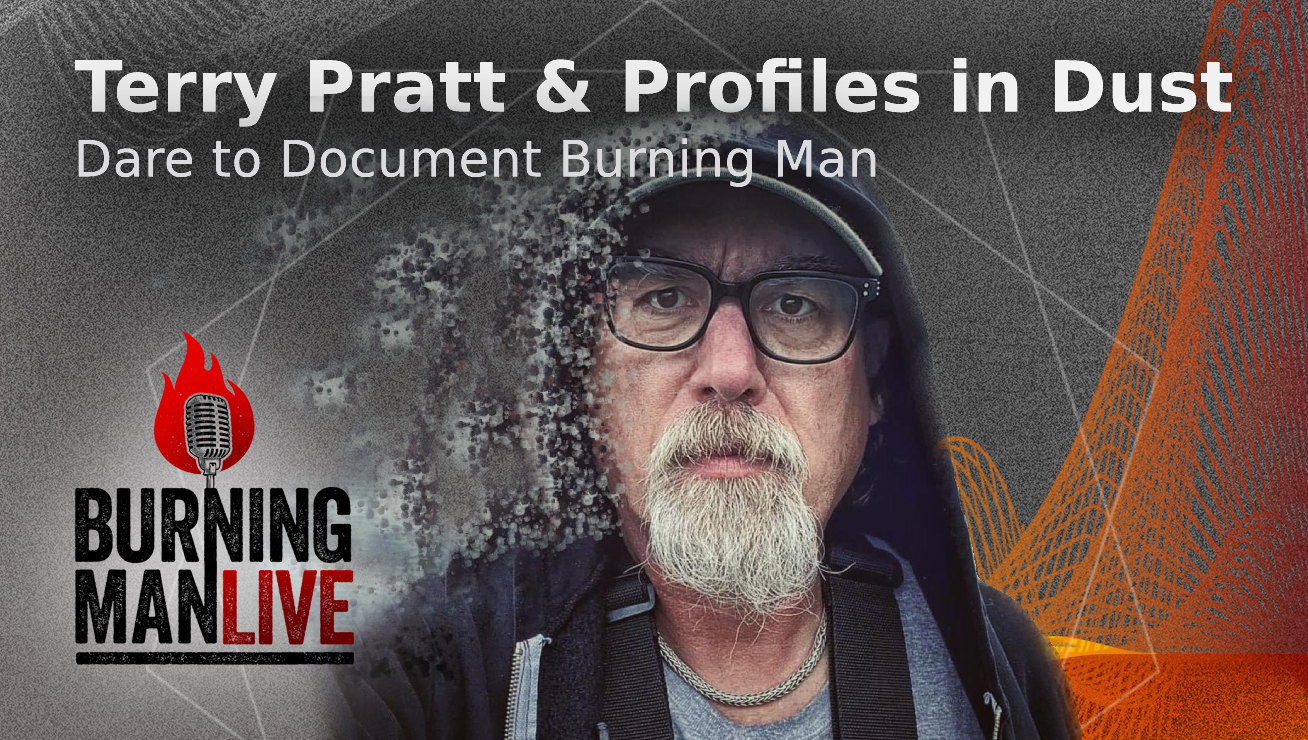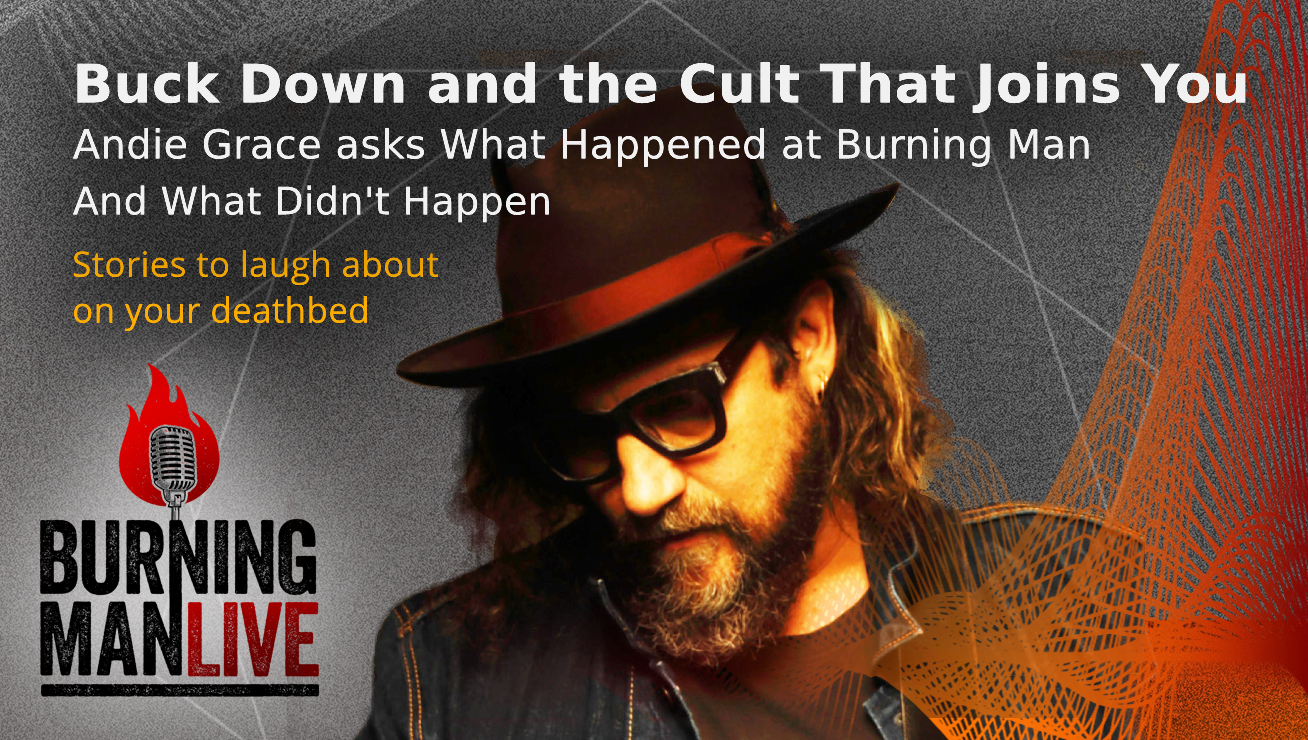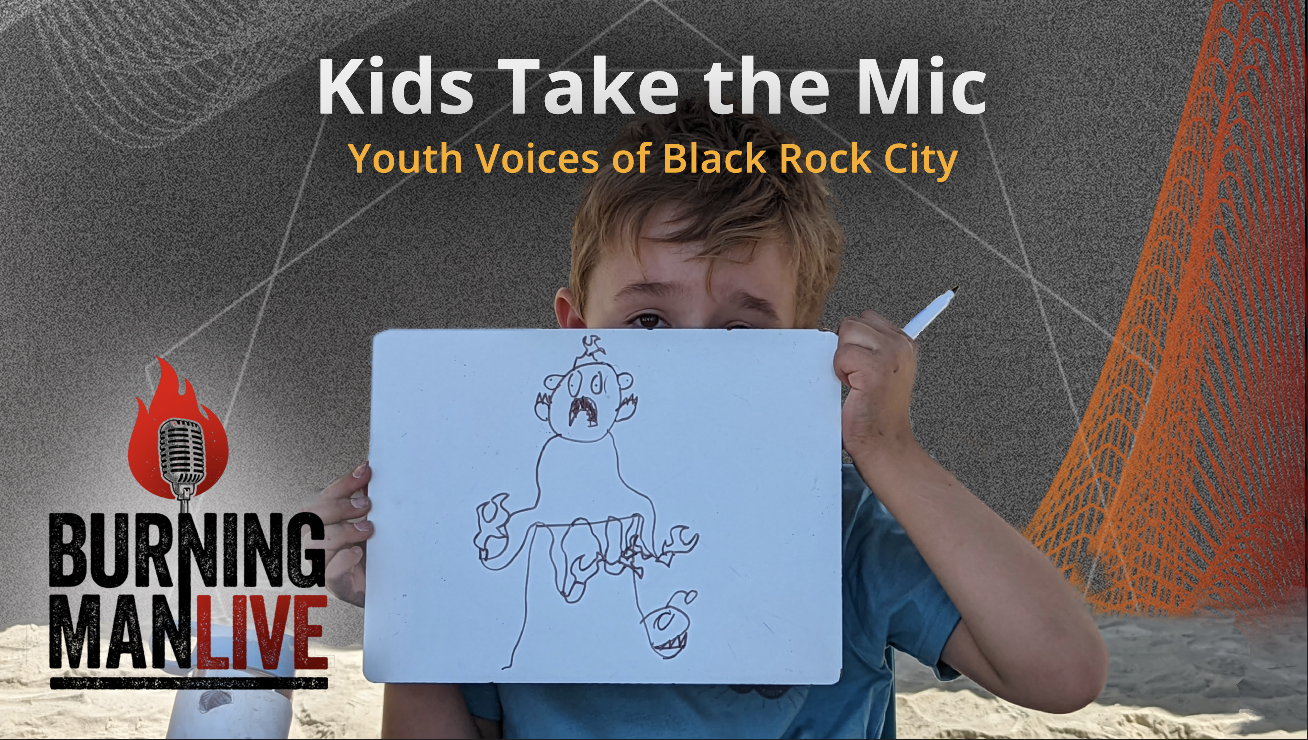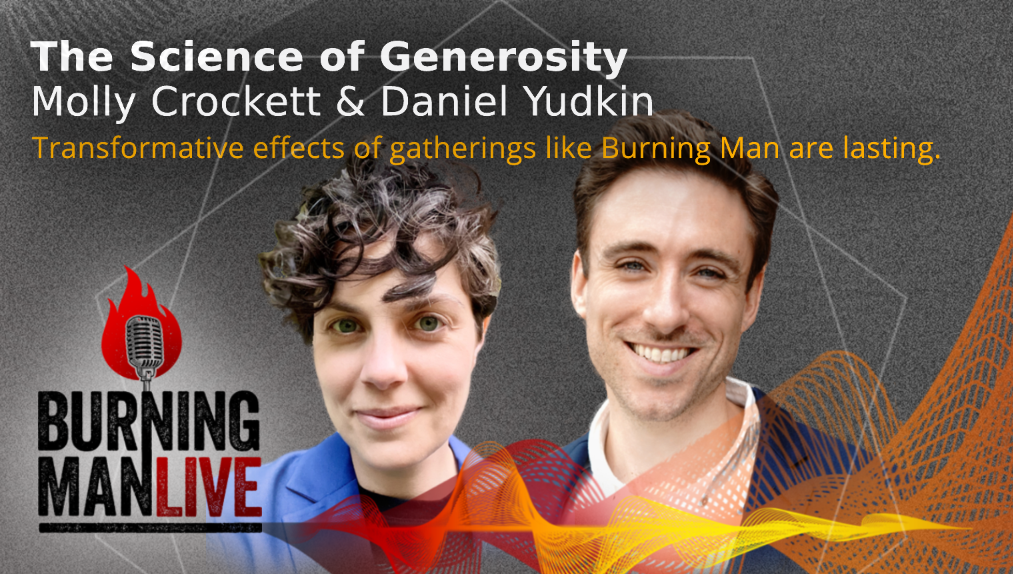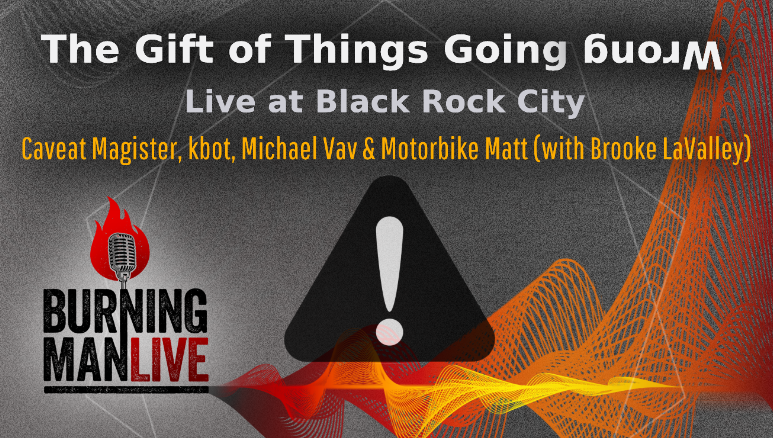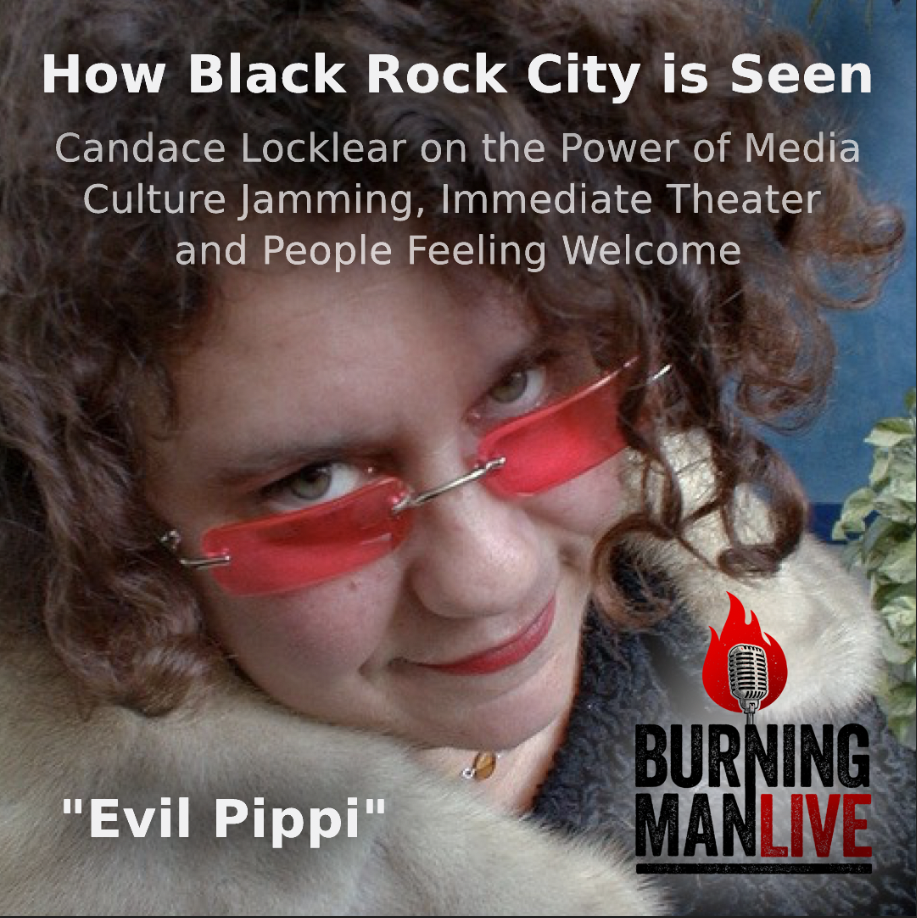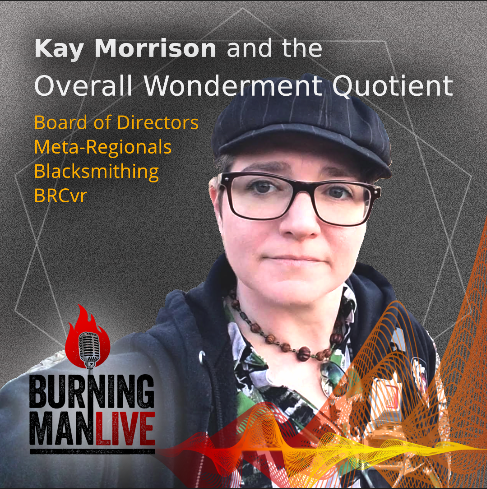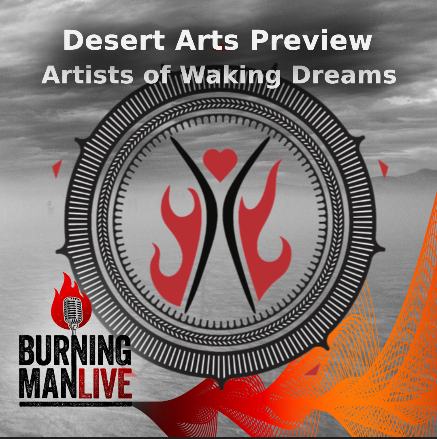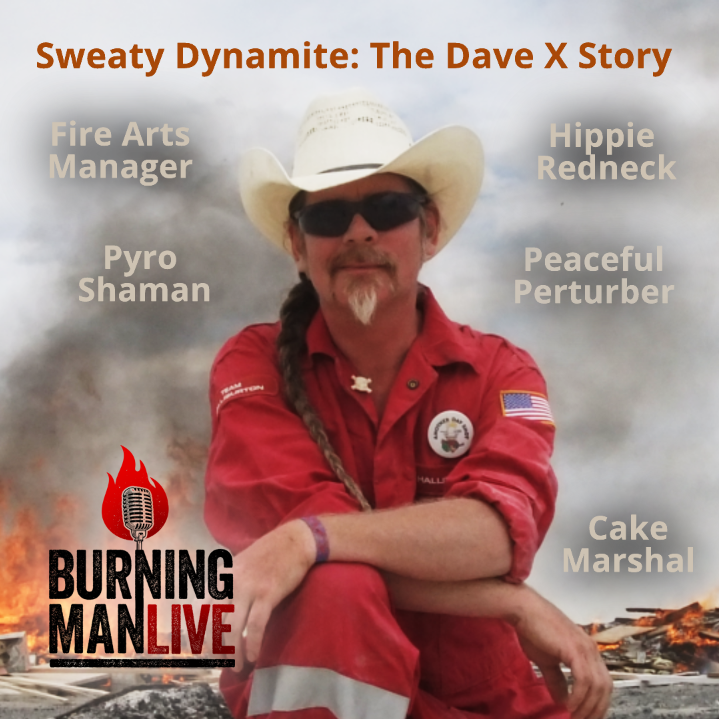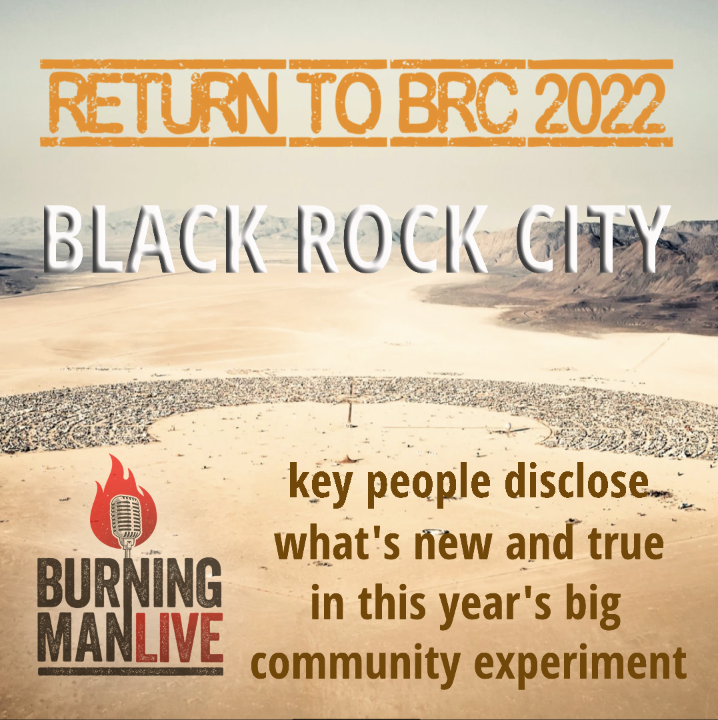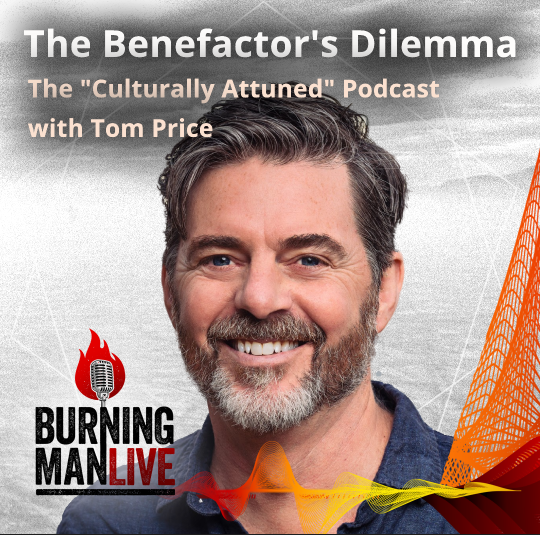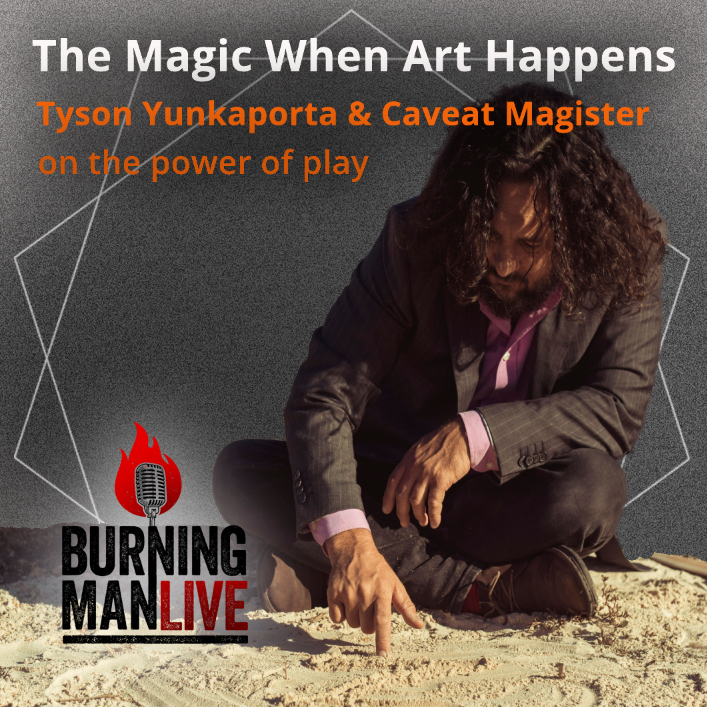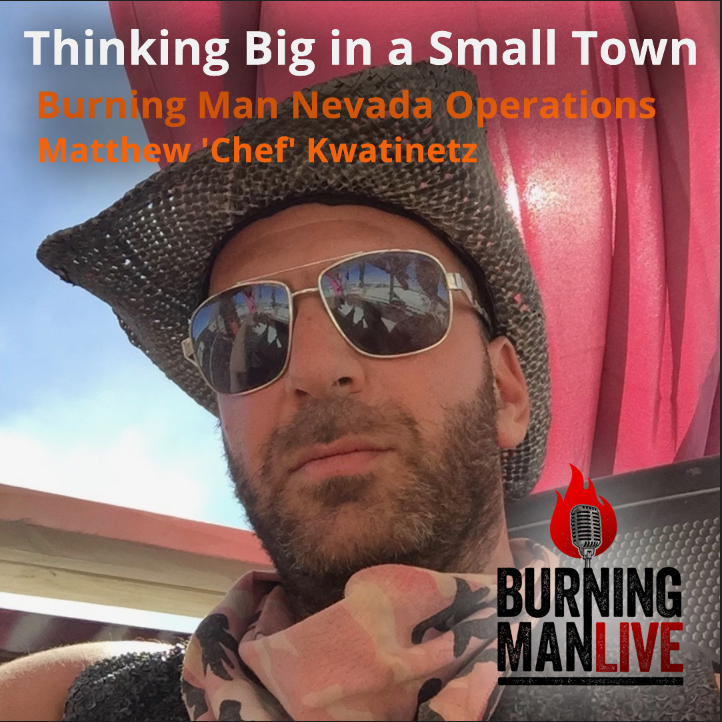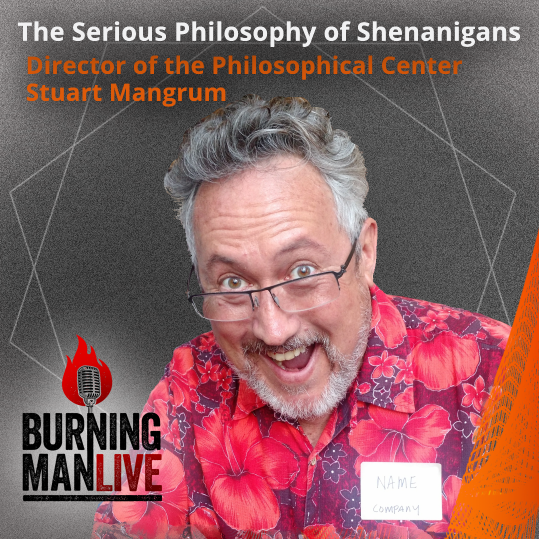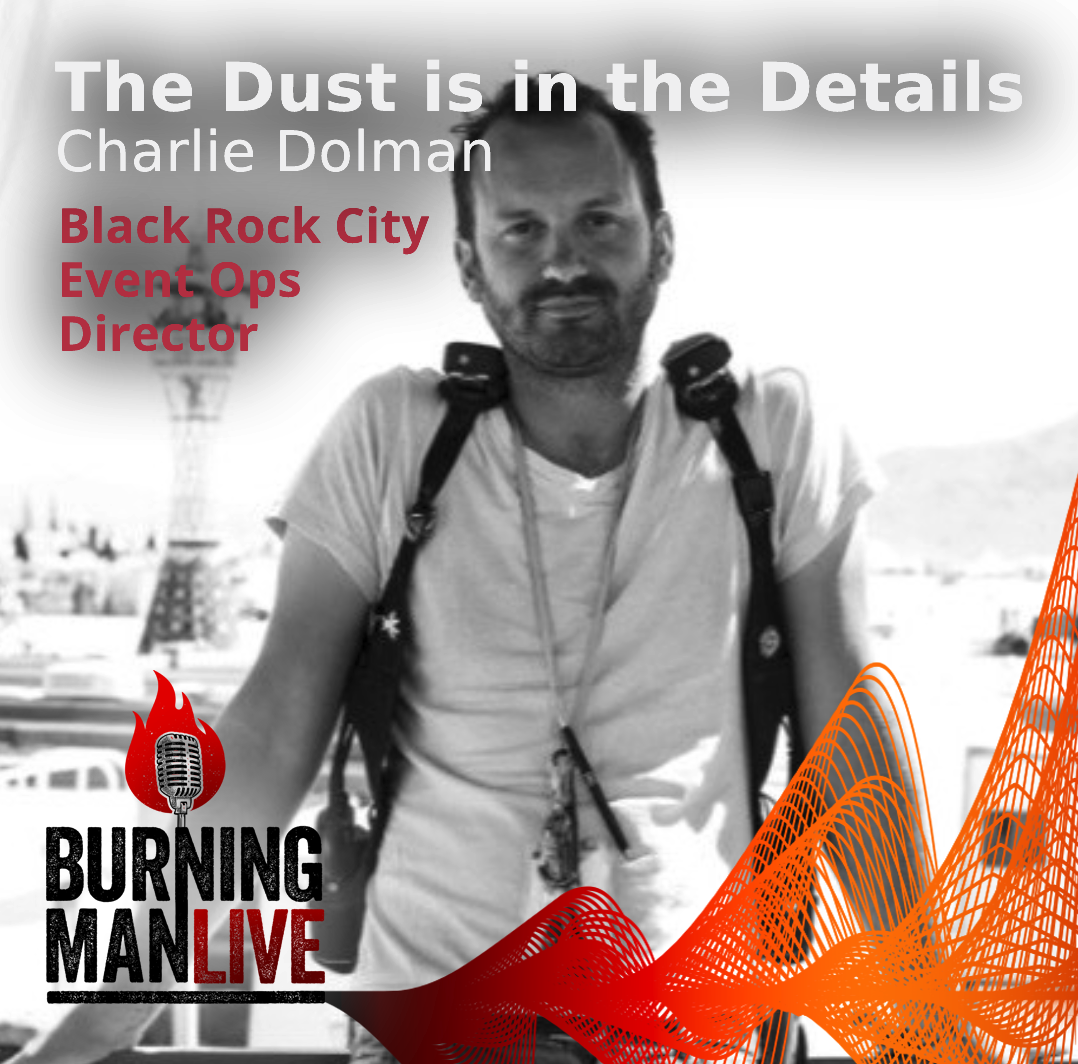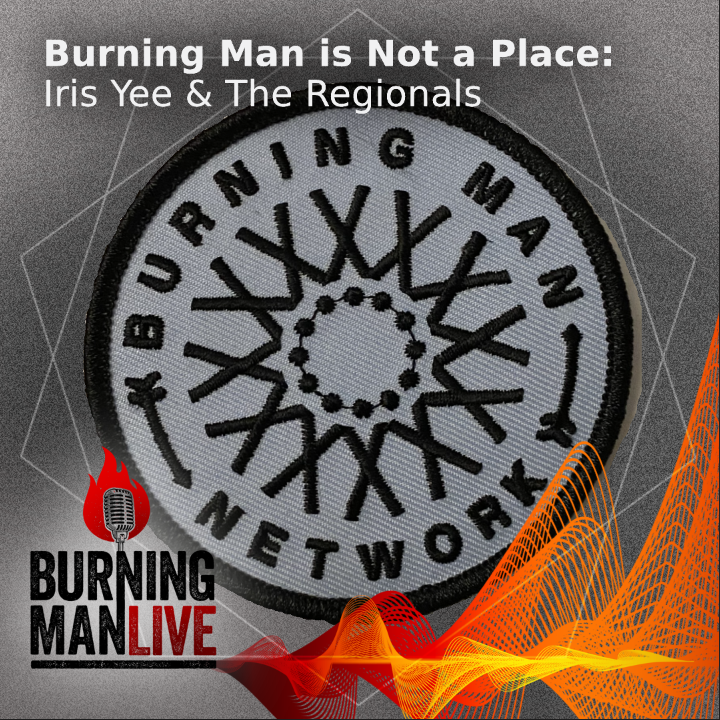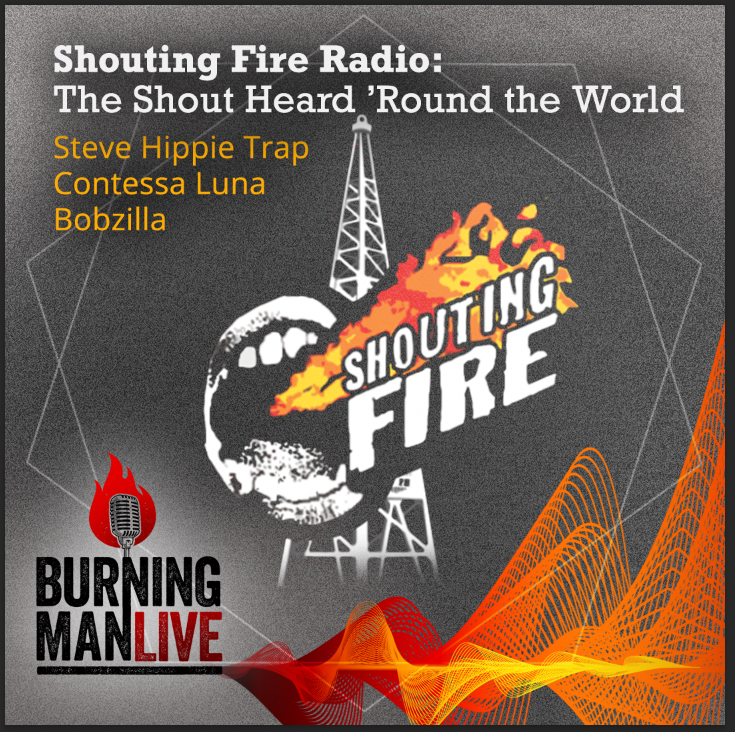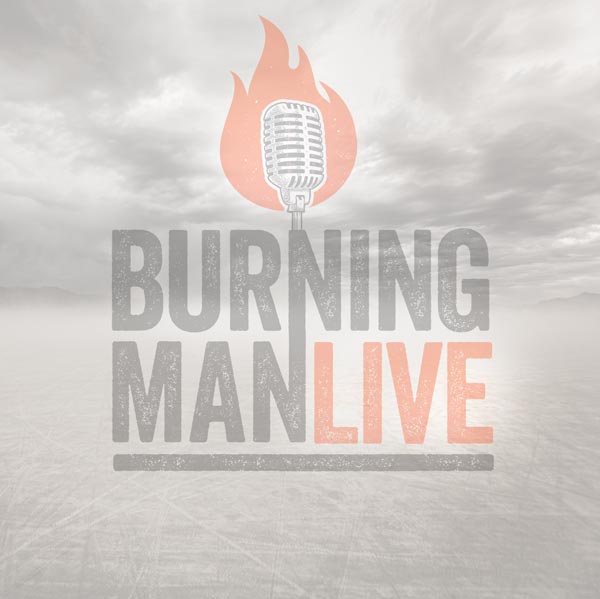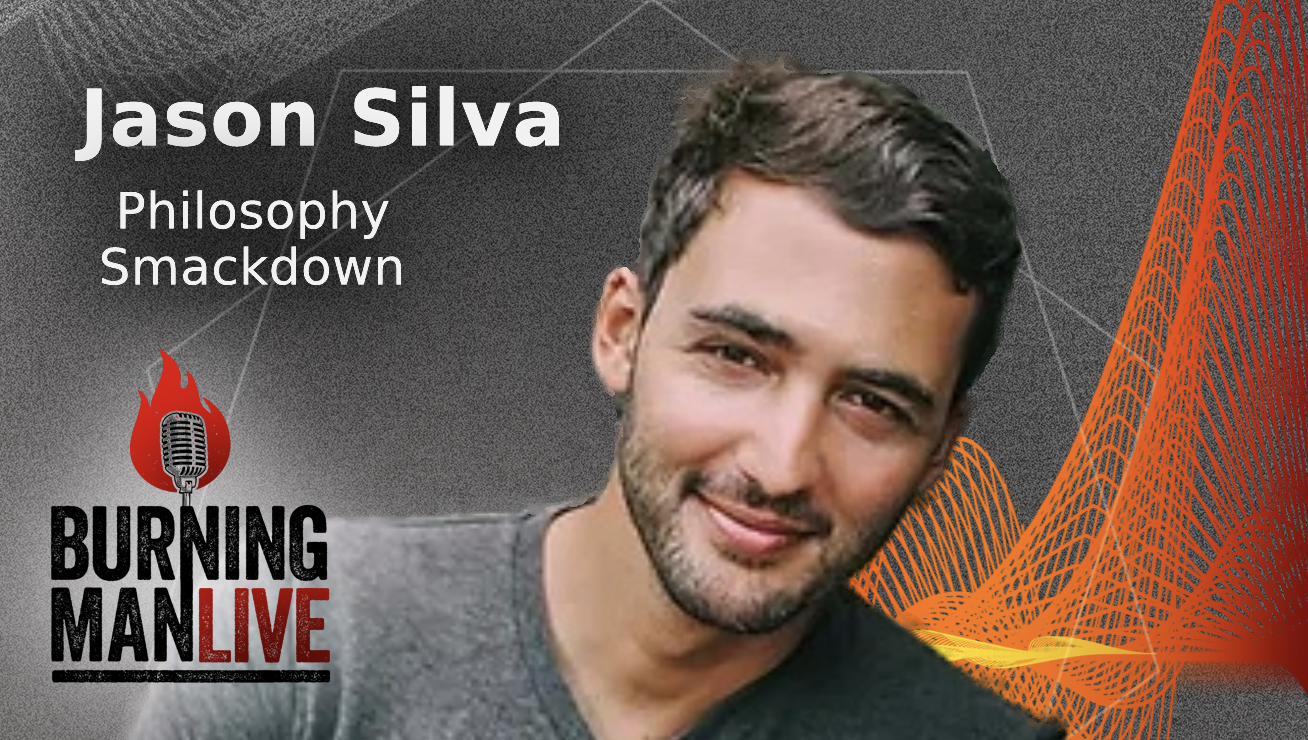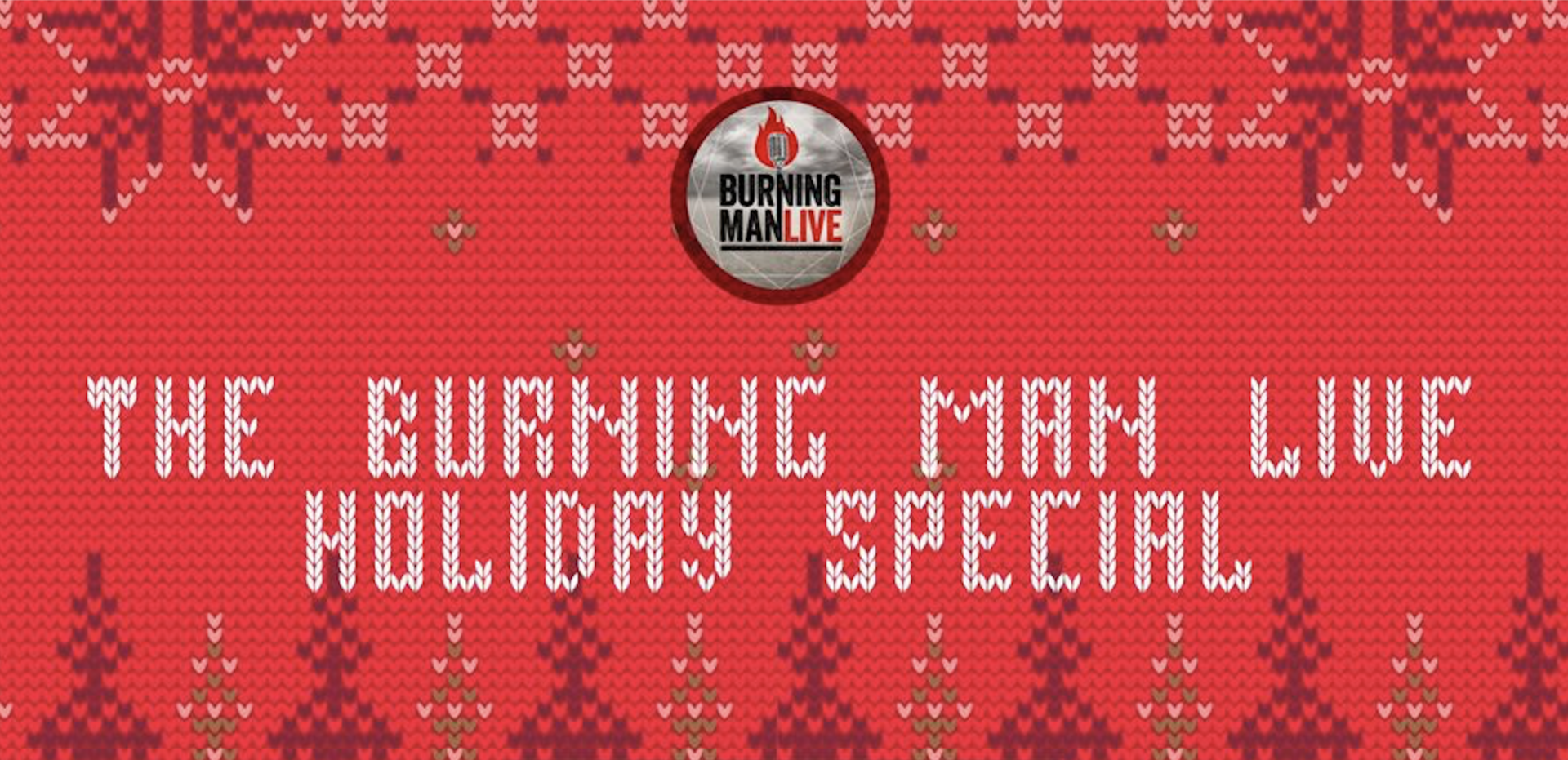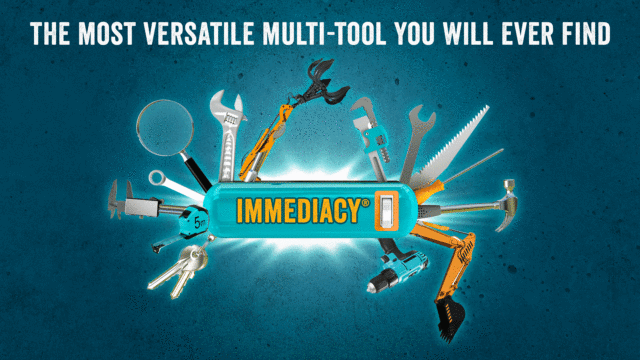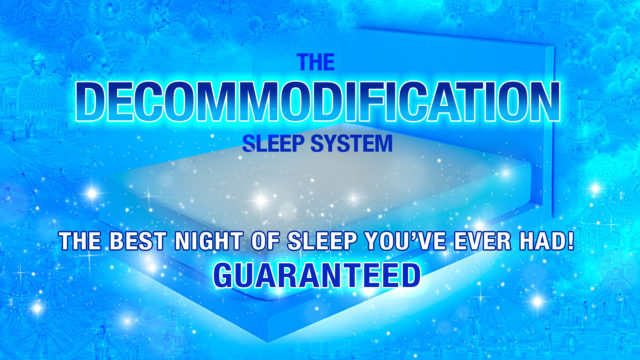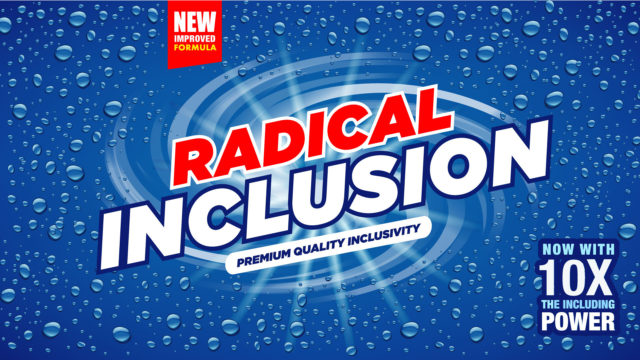"I believe we can get it all. I really believe we can. If we get a good team that really cares, and if we can get the Burning Man greater community to be more aware about, like, "What am I bringing out that might end up as MOOP?" I believe we can get it all. I believe that's possible, and I believe it's a really beautiful goal to work towards. And really, there is no fail in taking care of the land. This is our home. This is what connects us all. And it's our responsibility and our great honor and joy to take care of it in this way!" ~Barbarella, Highway Cleanup, Resto Team
"We need to take a look at the people who are coming as people who are fodder for curiosity, and fodder for contemplation, and fodder for pushing their own levels of intolerance… Let’s remember that the curiosity and the creativity that Black Rock City exhibits and offers to people can still be a pushback to intolerance, can still be an inclusion engine." ~Kay Morrison
COYOTE: Stay out of your own way. And also be ready to pivot. It’s not going to go according to plan. It never does. You’re problem solving most of the time. To me, one of my favorite parts is you’re always having to pivot and think on the fly and MacGyver stuff together. And that’s […]
KATIE: I wanted to touch on this year’s Burning Man theme, Curiouser & Curiouser. You may recognize that that’s a Lewis Carroll phrase taken from Alice in Wonderland, although the theme isn’t about that story per se, but about the greater concepts of curiosity and wonder, the absurd, the unknown, and how something really special […]
"It's a 28-foot tall giant octopus. It looks like a demented windup toy and its legs go up and down and spew fire out the tentacles, and the head has eight eyes that come in and out, and mouths that open. So it has total animation kinetically to make it come alive." ~Duane Flatmo
"People are actually capable of singing, but they believe that they are not because they are not the professional singers that they see on social media or movies or TV. Burning Man takes away that particular background and you find that you are more capable than you thought you were. And it's, of course, pleasant to find that out because art is an anodyne. Art is therapy. Art makes life better."
~Dr Hal Robins
“Burning Man started with the fire. For me, that is a strong ritual. And it’s a harmonious ritual, and it’s true. And then you have the gifting, because someone built that fire, someone made it with no expectations. Someone made that fire only to warm up other people. From this idea, everything grew exponentially, but that’s the essence. Creating something for you and for others, and expressing yourself through your creation. And that can be in all the directions magnified. It’s something that creates you. It’s a thing that you create and creates you. It’s like this beautiful spin.”
~Gabriel Muscalu - Romania
"Being in combat, you experience the worst of humanity. It pulls the veil off, and you no longer care about the facade. You get raw about it because you've seen the extreme. Burning Man is the opposite of that. It is also extreme, but it is the very best that humanity has to offer. You're not going to experience anything more stimulating, more accepting, more exciting than Burning Man because everybody there has coalesced and converged on this area to express their art and their love for the celebration of the human experience."
Wow, the playa is just the perfect place for sound, and especially at Burning Man, the deep playa, where you could go out and ideally drive a bus, in this case and have no one around you except for sand and art and eventually, as we've become known for, our “sunrises.”
The bus we think of as an instrument, actually. And all the time and effort and energy that goes into this beautiful 52-year-old bus is basically a platform for other people to share their talent and gifts and music and that type of thing, on playa and off.
Burning Man, rightfully, I doff my cap to it, it wants to become modern and respect the change of society. But I don't think it translates. And I don't think that Burning Man will find a way to become infused with what is going on in society. Its vitality is that it is this sort of relic of a time when experiencing things that have no meaning are incredibly meaningful. How it gets weird again, for me, is finding these moments of meaning.
I always had a love for art and was always thinking up things to do in the studio, just smaller projects. But I must say, nothing really to the effect of the mammoth. As soon as the idea came into my head, it was done. I was completely taken. And nobody could convince me that it wasn't going to happen.
"The Tip of the Iceberg is a 30-foot clitoris that was made to look like stone, fabricated in a way that it could be monumentalized like Stonehenge — in fact, my little nickname for it was Clit-Henge. This is a new version of a phallic symbol, basically. We have a birthright, a biological imperative, I believe, to have pleasure." ~Melissa 'Syn' Barron
We don't want this just to be an Instagrammable bucket list thing. It's a community, it's an experiment, it's an experiment in community; we want people to show up a certain way, and so I try to just have reasonable conversations with people to help them learn what Burning Man is, and learn how to distribute leadership and responsibility, how to empower people to be their most creative selves.
When the costumes are removed, and it's really just putting on your favorite comfy pair of snow pants, there is no brain power going into, “Where do I need to go to ensure that I'm not going to miss it?”
Why we do this crazy thing that we do? There's no end of FrostBurn stories. And to quote a friend, one of the first friends I met at my first FrostBurn, “It is the stupidest thing you will ever do on purpose.”
~Bexx Rosenbloom
"With so many tributaries in the story, to get our arms around it all, to hold on to it for future scholars, for anybody who is trying to do things in service of this global cultural movement, or even just studying any individual aspect of it, this is a historical repository to try to offer to the world." ~Andie Grace aka Actiongrl
"The sunrise service is very different. People are really caught up in the moment at the sunrise service. And, Madi is an artist in that she always times it that at some perfect moment in a song, the sun rises right behind us. When we're at the height of our most important moving song, the sunrise comes up. We see the light hitting all the people and their faces are sort of illuminating." ~Tori
"All sorts of things go haywire. And that's part of the magic of it, right? Who would expect a 70-piece symphony orchestra in the middle of a place that's designed to kill you? It's just… that juxtaposition is kind of what makes it special." ~Eric Yttri, Director of the Black Rock Philharmonic Orchestra
"For the cultural development, if we are putting more things in common, it will definitely create more affordable spaces for artists, and also maybe create other impacts about engagement, different people from different backgrounds, and engaging ourselves also in the neighborhood we're living in. There's so many aspects we are experimenting with right now." ~Arno Robin (L'OsstidBurn & LESPACEMAKER) Montréal, Québec
"There's such beautiful diversity in this art. It's also stuff that you can interact with, climb on, touch, you know. It has a beauty to it that museums often, you know, there's a barrier. And Burning Man art is typically very inviting." ~Dana Albany
The impact that we have as a community, is stepping outside of our normal default reality and landing in a place where reality is different. That's always been the impact of the event for me. It kind of cleared my brain of saying “This is the way things are.” So, “Oh, it's NOT like that over here. Why is that? Oh, it can be different.” The participation in this community, and the transformative experience of existing in that alternative reality, changes the way that people think, and I think it breaks down walls that oftentimes hold people back. ~George B Reed III
There are a couple of bands of wild horses at Fly Ranch. I had one of the bands come running at me when I was just wandering around in the morning, and they got about 20 feet away from me and they were stomping their hooves. I just tried to make myself as big as humanly possible. They eventually they ran off. And then that stallion got in a fight with another stallion of the other band. And you could just feel the force of that fight, when they kicked each other, when they were up in the air and then landed on the ground. I was several hundred feet away and I could still hear it and feel it. It was intense. Horses have a lot of power.
Anytime you put Burning Man in a museum it's not going to do it justice. But I think one of the things that it's really good for is: If you're a Burner and your parents don't understand about Burning Man, that's something you can either take them to or you can point at and be like, "Look, the Smithsonian is doing an art exhibition of Burning Man. It's not just sex, drugs and techno."
~Brody Scotland
I hold in my hand “The Field Guide to North American Monsters. Author is W. Haden Blackman. Published in 1998, my first year at Burning Man...
"As these technologies start taking over, us as humans, if we will still be called humans in the future — NI, Natural Intelligence — we're going to need to have the intelligence and the knowledge of the world around us, so we could help drive these artificial intelligence things, so that they don't take over our jobs and give us things that we don't want, and they don't take over the world." ~Steven Blumenfeld
"That is the brilliance of Burning Man. I knew so many people who were involved in the founding of Burning Man, and had gone every year. And I hadn't gone, but I was so confident I knew what I was going to experience. I wasn't even enthusiastic.
I went there and I was blown away. 'Wow, this is so different than what I expected.'
And that was the magic. The magic was being absolutely surprised by it, absolutely disarmed by the experience."
~John Turner
"I didn't even know that there was Burning Man events outside of Black Rock City, so I jumped at the occasion to go. When I got there, I started having the same sort of interactions with people at AfrikaBurn as I had had at Burning Man. It was at that moment that I realized that, well, you didn't need to go all the way to the Nevada desert to feel the strength and power of this community. You could be anywhere in the world. And then the idea came that I wanted to experience all of the different regional events that happened around the world in very different contexts." ~Roxane Jessi
“I'm so grateful for everything that people bring to Black Rock City. From my own experience organizing people, or cats, towards a goal is one of the hardest things to do and one of the most rewarding things to do. So those of you in these leadership positions, managing your friends to build a camp and bring your camp, and your group, and your fun to Burning Man, that really is incredibly hard.” ~Marian Goodell
"People are looking for a sense of agency in their life, and so many things can feel like they're happening to you. When you start to come to Burning Man and see the way that the art is created there, the way that people live together in community there, you start to understand that you have more control over your life. This also extends into the creative realm." ~Katie Hazard, Associate Director of Art Management for Burning Man Project
"Fun and play are the vector for change here because fundamentally all these changes that we are talking about — and I don't mind if your Burn is just about coming and having an immersive dance experience, I don't mind — but for me, it's about changing the world. And you do that by accessing aspects of yourself that go dormant in the default world." ~Monique Schiess
"These principles, they aren't just Burning Man. Larry Harvey wrote them as a description of who we are, and it's really a description of who humanity is when we're at our best. We can take these and extend it far beyond the trash fence, far beyond the regional networks and integrate it as a foundational fabric for creative collaboration to thrive on."
If you go online, YouTube Burning Man or something, you'll get these videos of just pretty art and people dancing and partying. I get that. That's cool.
Once I started going to Burning Man, I started seeing what's really happening. People need to see this too. There's a lot of stuff going on here.
I've always been a documentary filmmaker. I've always been very interested in seeing how people do things and how things are done. To document it is a different story, but it needed to be done. So when I was given that opportunity, I'm like, “That's awesome. That's exactly what I wanna be doing.”
~Terry Pratt
"You gotta let go with this notion that any one year of Burning Man is quantifiably different or better. It's not.
The process of doing it together IS THE ART. When we first started doing this, when everything burned, the whole point of it was: We are going to erase all the effort we just made because we are trying to keep the focus and the priority on the process of DOING IT, not the thing that was done. That was a very foundational, philosophical, North Star that we were all pointing to."
Advice for kids at Burning Man, from 6-year-old Teapot:
1. Don't be a dragon, be an angel.
2. Please respect the art.
3. Face the Fear Beast!
4. Don't mess with the art if it's under construction.
5. Don't tease the art. Like don't make fun of it.
An unexpected but wonderful benefit from doing this work with such an engaged group is that we got a lot of feedback about our design. While collecting data on playa, we asked people hypothetically about how they would distribute $100 between themselves and others.
We got a lot of pushback from our participants. They were asking things like, “Why are you using money to ask about generosity at Burning Man?” And they were totally right.
A broader point about the nature of social science research into generosity is that quite often the gold standard for measuring these behaviors uses money. As we know from Burning Man, that's maybe not the best mode of exchange to measure these kinds of psychological processes!
"Burning Man is not a program. It is messy and you throw yourself into it, and then you just pick up the pieces and say, “Who am I now?” And that's the beauty." ~kbot
"Evil Pippi is a character I came up with when I helped start Media Mecca with Marian in 1997 because I was really kind of a bitch to the press. I do PR in my everyday job and usually you're very solicitous and really wanting to press's attention but at Burning Man we really didn't want that much press attention, so I got to flip my character and sort of be a bulldog on the playa, and an Evil Pippi Longstocking helped me embody that attitude.
I got to be that person I couldn't be in my nine to five which is what a lot of people are I think are doing; they're living out their avatar dream on the playa. And it stuck. I have the tattoo. Actually my Pippi Longstocking on my arm has a Burning Man tattoo on her arm, so…"
"You bring your best intentions towards whatever the challenge is that you are gonna face, ‘cuz we're gonna face a lot of 'em out there, whether it's rain or loneliness or forgetting your medication or whatever it might be." ~Molly Vikart
"The Overall Wonderment Quotient can be like measurables in meetings now. Like, “We need your Overall Wonderment Quotient analysis.” You know, just to take all the fun out of it."
"We get this really special and rare opportunity to hear directly from the artists themselves about their work. So you're going to get a sneak peek into the minds of these artists and creative teams as they share with us the projects they're working on for Burning Man 2022."
"It's a social soup that encourages more ingredients. Permission soup? Permission circus? I don't know what the right metaphor is. It is a great encourager, and it increases all kinds of improbable probabilities." ~$teven Ra$pa
"The dreams that we had that became Burning Man were so off the charts, if you had told some old geezers back in the days, “Here's what we want to do,” they would have been skeptical and maybe held us back.
We never asked for any permission, we just did it. So I hope that the young folks don't ask me for any permission, they just do it. And then I come help them try to support their dream." ~Dave X
In May, staff and core collaborators gathered to disclose what’s new and true in the big community experiment that is Black Rock City.
· How Center Camp changed
· Turning down turnkey camping
· The bumper crop of inclusive art
· The hive platform for teaching, learning, and up-leveling leadership
They shared about jobs, classifieds, and the Survival Guide; about behind-the-scenes machines for emergency response, decommodification deals, sustainability solutions, and diversity discussions.
This is a glimpse into what to expect.
"Burning Man is this coming together of wildly disparate people from hugely divergent backgrounds — economic, social, political, ethnic — putting them all together, and then scrubbing away the cultural iconography that we use as shorthand for figuring out how to differentiate each other, and creating an opportunity for them to see each other as PEOPLE." ~Tom Price
"Aboriginal languages don't have a word for art because why would there need to be? I don't think most humans had a word for art until fairly recently, because you don't have to talk about it. It's not an abstract; it's not a field; it's not a discipline. Art is bound up in your life. Art is how we do. Art is just how we do. It's how we be in the sacred every day."
~Tyson Yunkaporta
"We haven't applied those lessons that we know already in a place where we have so much presence in ownership. It's a missed opportunity. It's a form of art in and of itself. We have a lot to add in a respectful, collaborative and communal way that will really make people very happy."
"If you think about all of the hours that are put in by everyone, not just the employees, not just the volunteers, but all the artists, all the theme campers, all the year round work that goes into making Black Rock City, I'm going to wager that it's about as much human effort as putting a man on the moon, or a woman on the moon, or building a pyramid... Or building a pyramid on the moon!" ~Stuart Mangrum
I like to think about our organization as in service of the community. We serve. Part of that service is creating the platform. A lot of what we do at Black Rock City is about creating the platform... Let's find places for people to continue to give their time and love to the community in a way that works for them.
We want everybody to do their best and we want the community to live up to the values that are embedded in the principles, and really treat each other with respect and trust, and have the hard conversations.
Burning Man is not a place, it’s actually a community, and it's a way of thinking about how we can be in conversation together. When we think about the fact that we have these principles, it's about trying to create a collective governance that works in the desert, but also lasts outside. - Marlon Williams
"The sublime quality of the playa is integral to the story of Burning Man. Home to a seasonal fire ceremony culminating with the incineration of a towering effigy called ‘the Man’, Burning Man is a frontier settlement imagined as a tabula rasa, Petri dish, blank canvas. These ideas reveal a founding paradox: abundance and possibility are propagated in one of the driest open expanses in North America." - Dr. Graham St John
"We formed something that I like to call the Global Burner Radio Network. This group of stations from all over the Burning Man community, all sharing resources, carrying each other's programming. You see we've got people from France, we've got people from Belgium, Germany, Australia, Norway, all over the US. We've got people of course here in the Netherlands. We've got some really great talented people from stations and from communities all over the globe. We love it." ~Bobzilla
STUART: So yes, it’s true. This is in fact, another episode of Burning Man Live. I’m coming to you from our invisible studio, deep, deep in the internet ether, flying across the airwaves or the sea waves or the wifi waves to you and your earbuds wherever you are from wherever we think that we […]
"I used to say that the reason I keep going back to Burning Man is to commune with a small group of people who we have the shared experience, but to continue this ongoing conversation that we have been having for 20 plus years, and the topic of the conversation is: Why do we keep coming to Burning Man? But for me every year, I either come with, or I see people who have never been, it's their first time. And every year I see their jaws drop, their eyes get wide, that they experience the same thing that I experienced back in ‘94. Burning Man to me is this place that creates a sense, it helps people connect with two things, their sense of wonder and their sense of inspiration."
Founder. Catalyst. Mythic character in the Burning Man world. Also known as Michael Mikel, Danger Ranger shares some of his stories of pranks and potential in the wild west (rural and urban) - this time with twists that tie together his other tales. Stuart talks with him about what happened, what's happening, and what might happen next - from difficult topics to revelatory contexts. It starts with "stuff no one has ever heard."
Miss swapping stories around a fire? Start a show and name it The Burn Barrel.
Stuart Mangrum talks with Doxie from Detroit, Kay Morrison and Peter Durand about creating their story show to keep us all connected until our next free-form social.
Our guest today is a philosopher, also a storyteller, a filmmaker, a futurist, and a media personality. You may have seen him on the little pixel screen perhaps as the host of National Geographic's Brain Games, or maybe on his YouTube show Shots of Awe or you might be listening to his podcast. Oh my God. That's right. It is Jason Silva.
What we're doing is working with people we really like and respect at Sotheby’s to look at how the practices of art in general might be revisited and reevaluated, and not only change some of the ways that we all went about our business, but also ask people to look at the art through the lens of the value of the aesthetic and the artist, and not the marketplace. So it’s a big learning thing.
"The 10 Principles weigh in at only 412 words, and yet their interpretations and translations serve to develop and deepen the global community. This is a deep dive in how the 10 Principles apply in modern times, in real life and in virtual reality. This was recorded in BRCvr, so the little noises you hear that sound like popping bubbles, each one is an avatar in the audience pushing the love button. Imagine hearts floating out of avatar heads every time you hear that sound. Or imagine you’re in a cartoon bubble bath with Stuart, Raspa and Athena. Whatever floats your toy boat."
Rosie von Lila takes us on a journey through the form and formation of the stories we tell ourselves, the stories we teach, the stories we collectively assume are true. She explores the narratives of conflict and collaboration, of domination and partnership, and how they shape and shift the self and the culture. She speaks with Caveat Magister, Catherine Connors, Harley K Dubois, Neil Shister, Quest Skinner, Riane Eisler, and Zach Bell.
You and I, we have living laboratories for embracing new technologies and practices. They are Black Rock City, rural properties in Nevada, and 90-something regional events around the world. The Burning Man community is vast, diverse, and creative - and can ripple out a cultural shift in how we do the earthling thing.
For it to be better for the ecology for Burning Man to exist, than for it not to exist, what must change?
The 2030 Environmental Sustainability Roadmap declared that in the next 8 years we will become carbon negative and regenerative. How?
Stuart talks with David Festa, who brings 30 years of experience to help us figure out how.
"And suddenly if you do something that is symbolically potent enough, that seems poetic and magical enough that part of your psyche will perk up and take notice and go, oh, something's interesting happening here and we'll pay attention and we'll be listening and engaged in a way that is not in ordinary life."
"We are giving grants to those artists as planned, in the vein of 'art is going to happen no matter what,' which is super exciting. Instead of rolling the Honorarium Grants forward another year we're actually giving out the grants, using those donated funds, letting artists make art and do what they will."
"When we realized that people were going to start needing help, every single one of us went to our garages and looked at our burning gear and our camping gear. It was like, I've got extra containers, I've got a propane burner, I've got a propane heater. I can do this."
We started really diving deep into what a collaboration might look like. And there were two topics that really rose to the top in terms of joint need. Number one was emotional intelligence. And number two was trying to help people to communicate and to work more effectively and cross cultural environments. And so here we are.
"The world is not the same, Burning Man should not be the same. We can add some intentionality."
I think 2020 really made a lot of people who have never felt vulnerable, vulnerable, and that's going to have these ripple effects in what matters to people, what they want to spend their time and money and efforts on. The potential that we have as a community in this time is really a blessing.
"We just decided it would be fun. I don't know that we knew of any of the other camps. I mean, we'd heard that there were other camps we thought, well, Christmas Camp, it's gotta be Christmas camp in the desert. So that's what we did. I remember we won some award that year... They gave us the award for the best camp that year. And that's probably what became known as the first camp, even though it wasn't really anything than some other people deciding that we were the best."
There's a really big opportunity to disrupt our habits, our routines, and our norms at this moment, or able to kind of make a change. You don't have to go back to the same thing as you did before. It's a great time to just. Break something and make a change. The whole thing is broken. So I think we have to break our norms as well.
"Black Rock City occurs in the national conservation area and, believe it or not, there are a lot of animals that use the playa when we're not there."
"It originally was a bunch of mainly carpenters that I knew - that I recruited - to build this thing. And during all the time that we did it, not one of them ever asked me what it meant, what it represented. Of course they didn't have to ask me what it meant. It was us." - Larry Harvey
BML INTRO: Coming to you from the many worlds of the multiverse, it’s the podcast that’s never the same twice, and always two things at once. LARRY HARVEY: We don’t dictate what people express at Burning Man, thousands of Theme Camps fill the streets. No one’s selling anything. They’re giving you something for the sheer […]
"If somebody really, really, really, really wants to be a Ranger, they shouldn't be a Ranger because I call it being badged. People think, “Oh, I'lll be like, I'll be a combination security man, and one of those people that will hold a sign that lets people cross the street and so forth, and let's try to establish a culture. Service as opposed to domination.So the way I pitched it was if you think of it as a river, and our job is to shape the river." ~Duane Hoover (Big Bear)
Burning Man Live's faithful hosts Stuart and Logan talk with Mark Rosenberg, aka Winkel, from The Voter Party. Inspired by the participatory culture of Burning Man, TheVoterParty.org teaches individuals how to use art, music, and costuming to get out the vote in their communities.
If you found a “hippie-proof” story-cube at a festival or in a war-zone, would you share your story with it?
Stuart and Andie talk with Finnish scholar Jukka-Pekka Heikkilä about the Burning Stories project, the qualitative research of hope and anger, the innovation at Burning Man Regional events in Europe, and teaching entrepreneurialism in Lebanon and North Korea.
What more can we learn about Burning Man culture by studying it academically?
In a world with an unpredictable future, what more can we learn about participatory culture, psychological safety, and communal resilience?
Yomi! His name should be spelled with an exclamation point. He’s an impassioned and jovial part of the small team doing big things in the nonprofit arts organization “We Are From Dust.” The all Burner team is “dedicated to proliferating interactive, participatory artwork in public spaces that not only transforms the way people engage with art, but changes how they consider their daily lives.” In this time of dramatic changes for in-person experiences, We Are From Dust persists to support artists in our community, find new avenues for sharing participatory art around the world, and support Black Lives Matter beyond first world applications.
Logan and Andie talk with Matthew “Chef” Kwatinetz about Black Rock Power, an ambitious new sustainable energy initiative rooted in the Burning Man community, and how Black Rock City is the ideal laboratory for prototyping and iterating solutions for the larger world. No pressure.
In Black Rock City, Burn Week is when everything is happening and everyone is there, just like in this episode, where comedians and philosophers Duncan Trussell and Nick Kroll take over the podcast, and Stuart, Andie, Logan, and Vav are the guests. We discuss everything from permission engines to economic models, everything from Judaism to […]
"You start moving from healing yourself, transforming yourself to actually being like, 'Okay, well I need to really transform the society. I need to actually bring this into the world.' ... The point of it all is that if you're too preoccupied with the idea of transformation, it'll have the opposite effect. So you'll just kind of be in a loop of self aggrandizement."
We keep talking about the Multiverse. What does that even mean? Is it actually a thing? Why is sad Stuart sad? It is because of his dead cat? Which human should we put in a supercollider, and why? Are Stuart’s dreams actually interdimensional travel, or just crazy talk?
What is reality?
All these questions and more are answered with even more questions by a theoretical physicist who also happens to be a Burner, Adam Brown.
In a time and space without a Black Rock City event in Nevada, volunteer crews are using computer code instead of power tools to create a host of digital Burn experiences. What exactly are the “Eight Recognized Universes of the Burning Man Multiverse?” What can you do in these online worlds, and will Daft Punk play at the virtual trash fence? Logan and Stuart go looking for answers with the organizers.
The through-line for these online offerings is that they will all be celebrating Burning Man culture - from virtual reality worlds to curated Zoom experiences, from web browser adventures to a global streaming burn night. Burning Man Project’s Kye Horton and Gloria Beck help us figure it all out, along with a few of the Universe creators themselves.
We like to say that Burning Man is made of a million stories.
Catherine Burns is the artistic director of The Moth. It’s a wildly popular, Peabody-award winning storytelling series now celebrating its 20th year.
Burning Man stories have been told many times on the Moth stage. As it turns out, Catherine has a few Burning Man stories of her own.
Stuart and Andie talk with her about loving, grieving, and celebrating as a participant at Black Rock City, and just why storytelling inspired her to devote her life to helping other people tell stories of their own.
Michael Vav shares about the Metric Time Trainer that works with Alexa and Siri, but not “Mike” the smart microwave that burned Vav’s toaster pastry.
Burning Man art has become a movement in the mainstream art world and in popular culture, spawning museum shows, books, and films. In what ways does this radically participatory, highly interactive form of expression translate from its desert home to these more traditional channels?
Stuart speaks with Jennifer, Sophia and Andrew.
Jennifer Raiser is the Treasurer of Burning Man Project, is a Black Rock Ranger and answers to the playa name “Coco Cabana.” She authored several books including: Burning Man: Art on Fire.
Sophia Swire is an entrepreneur, activist, author, and filmmaker. She’s produced several documentaries including the film: Art on Fire.
Andrew Johnstone is an Oakland-based artist, painter, muralist, Man base pavilion lead, and 20 year collaborator with Burning Man founder Larry Harvey.
Tony “Coyote” Perez has been building and striking Black Rock City since 1996, back when it had a tenth of the population and a tenth of the stability and user-friendliness. Two long years later he co-founded BRC's Department of Public Works and has been the City Superintendent ever since. He’s the “Bard of the Desert,” the blogger “Coyote Nose,” and Burning Man’s first Storytelling Fellow. His book is “Built to Burn: Tales of the Desert Carnies of Burning Man” and it’s, uh, creative nonfiction...
Stuart and Andie talk with him about the sketchy days of early Burning Man, the widows of Gerlach, a territorial cattle rancher, and a helicopter Sheriff who loses his cool.
WARNING: Contains descriptions of a graphic nature that made people lose their cool. Once you hear it, you can’t unsee it in your mind.
Harley K Dubois tells the tale of meeting Coyote on his first day at Burning Man, and the next day, meeting an entirely different version of him.
Caveat encourages you to get what all builders and artisans need: the world's most versatile multi-tool: Immediacy. Get it now… RIGHT NOW!
Stuart and Logan talk law enforcement and alternative public safety models with Tool and Thespian of the Black Rock Rangers, and with Roger Vind, who in his previous career as a Nevada Highway Patrolman was the first law enforcement officer to set foot in Black Rock City, and now works for Burning Man Project as its law enforcement liaison and associate director of public safety.
The Burning Man event started as a “temporary autonomous zone” with no law enforcement of any kind. Then the community came together to create its own, homegrown public safety organization, the Black Rock Rangers.
Could the Rangers serve as a model for other cities looking to defund or demilitarize their police forces?
Are social capital and good communication skills enough to inspire positive civic behavior when wielded by unarmed volunteers with “approximately the authority of a Cub Scout?”
If so, do we really need all those heavily armed federal officers to keep the peace in a city that has one of the lowest crime rates in America?
An otherworldly oasis in the desert. Water, wildlife, possibility, and responsibility. Zac manages Fly Ranch in Nevada. He shares about stewarding the majestic and extreme natural sanctuary.
Elizabeth and Robert direct the Land Art Generator, and challenge artists and engineers - anyone - to design aesthetic and harmonious energy infrastructure for prototyping in the extreme environment of Fly Ranch.
Zac Cirivello, Operations Manager of Fly Ranch, Nevada
Robert Ferry & Elizabeth Monoian, founding Co-Directors of the Land Art Generator Initiative
Will Roger Peterson, one of the 6 founders, tells of how “Burning Man” became Black Rock City at Fly Ranch in 1997 - a crucial year in Burning Man's legacy - when its citizens took ownership to the streets.
Caveat is convinced that Leaving No Trace lowers car insurance via the chakra-razing technology that NASA uses when astronauts need vision quests.
Stuart talks with one of the Founders Harley K. Dubois about how Burning Man evolved since the 1990s... and what now…
Power, money, and consumer substitutions for real experiences.
Rain and rave camps at Black Rock City, and living under a lucky star.
Maker culture, social capital, and seeing ourselves through the coming changes.
Coyote tells of the time a woman in white emerged from the mud to face off with a post-apocalyptic flame thrower on wheels.
Caveat asserts that Radical Inclusion transforms cat memes, game night, and society.
Harley K. Dubois
How does the Burning Man community engage in the fight for racial justice? What skills do we have to share? Burning Man Project’s Senior Communications Manager Dominique Debucquoy-Dodley speaks with three guests who have devoted much of their lives and time to these questions.
Élida Margarita Bautista, Erin Douglas, and Marlon Williams join Burning Man LIVE and discuss the current landscape of the Black Lives Matter movement, where we are as a country, and how the 10 Principles, especially Radical Inclusion, play into it all.
Andie Grace distinguishes between being open to all and being welcoming to all.
Caveat gets excited about the principle of Communal Effort, maybe too excited.
Stuart and Logan talk with DA (aka Dominic Tinio) about Playa Restoration, the team that returns the desert to a pristine state after each Black Rock City, and the meditative pride that comes with it.
They recount launching a burning piano from a trebuchet at the world’s largest Leave No Trace event.
They discuss environmental sustainability, MOOP (Matter Out Of Place) and DA’s Black Rock MOOPATHON, an 85-mile desert clean-up starting this week.
Coyote shares about losing his car under a massive pile of garbage.
Caveat shares about how socks - Civic Responsibility socks - provide a comfortable step, and a fun and functional democracy.
Stuart and Andie talk with comedian & podcaster Duncan Trussell about the show The Midnight Gospel, the secret sauce of Black Rock City, the BRC art theme and temple, alternate realities, death, mourning, gurus, absinthe, “Drunk History,” and Terrence McKenna... and the Tibetan Book of Dreaming and Sleep… and some other stuff too...
Caveat Magister shares about how Decommodification can lower your car insurance, even if it doesn't.
Stuart and Andie talk to leaders of the Burning Man Regional Network about creative ways organizers around the world are out-weirding the pandemic.
Iris Yee, Head of the Burning Man Regional Network
Steven Raspa, Associate Director of Community Events
The Burning Man Regional Network plays a key role in the year-round extension of the Burning Man experience, supporting it as a global cultural movement.
Clovis Buford shares about being the keeper of the hat - Burning Man founder Larry Harvey’s iconic Stetson hat.
Caveat Magister sprinkles Radical Self Expression on his salad, and suddenly he’s putting all of his childhood doodles on the wall to make a museum of his unconscious.
Stuart and Dicky Davies talk with three temple builders of Black Rock City. What does “temple” mean in the context of a secular culture based on humanist principles, where ritual is a vector for culture, not really a religious thing?
Lawrence “Renzo” Verbeck is an architect, contractor, and sculptor.
Sylvia Adrienne Lisse collaborates on large-scale, interactive art teams at Black Rock City, Regional events, and festivals.
For Black Rock City, they worked together on the Temple of Direction (2019) and are co-creating the Empyrean, the 2020 temple, now being developed in virtual space, to be unveiled in real life in 2021.
Arthur Mamou-Mani is an architect and director specializing in digitally designed and fabricated architecture. He was the Temple builder for Galaxia in 2018 and designed the Catharsis project for the next Black Rock City.
Stuart and Andie talk with Tom Price, a Founder of Burners Without Borders, and its current leader Christopher Breedlove.
They discuss BWB's creative solutions to crises, from Hurricane Katrina to COVID, and how Burning Man is a permission engine for people to develop new attributes and expressions, have fun, and surf the chaos.
Then Pyrotechnics Expert Dave X makes the impossible possible!
